11 May 2016 Baghdad bombings
On 11 May 2016, the Islamic State conducted a series of attacks in and near Baghdad, the capital of Iraq, killing at least 110 people and wounding more than 165. According to ISIL, attacks were aimed at Shia fighters.
One hundred and ten people are killed in an ISIL bombing in Baghdad.
On 11 May 2016, the Islamic State conducted a series of attacks in and near Baghdad, the capital of Iraq, killing at least 110 people and wounding more than 165. According to ISIL, attacks were aimed at Shia fighters.
Fifteen people are killed and 46 injured in Kinshasa in a stampede caused by tear gas being thrown into soccer stands by police officers.
The 2014 Stade Tata Raphaël disaster refers to a stampede that occurred in Kinshasa, Democratic Republic of the Congo, at the Stade Tata Raphaël on 11 May 2014.
Two car bombs by unknown perpetrators exploded in Reyhanlı, Turkey, resulting in 52 killed and 140 injured.

The 2013 Reyhanlı car bombings took place on 11 May 2013, when two car bombs exploded in the Turkish town of Reyhanlı, a town of 64,000 people, 5 km from the Syrian border and the busiest land border post with Syria, in Hatay Province, Turkey. At least 52 people were killed and 140 injured in the attack.

Reyhanlı is a town and district of Hatay Province, on the Mediterranean coast of Turkey, near the country's border with Syria.
Fifty-two people are killed in a bombing in Reyhanlı, Turkey.

The 2013 Reyhanlı car bombings took place on 11 May 2013, when two car bombs exploded in the Turkish town of Reyhanlı, a town of 64,000 people, 5 km from the Syrian border and the busiest land border post with Syria, in Hatay Province, Turkey. At least 52 people were killed and 140 injured in the attack.
An earthquake registering Mw 5.1, the worst to hit the region for more than 50 years, struck near Lorca, Spain.

The 2011 Lorca earthquake was a moderate 5.1 Mw earthquake that occurred 6:47 p.m. CEST on 11 May 2011, near the town of Lorca, causing significant localized damage in the Region of Murcia, Spain, and panic among locals, and displacing many from their homes. The quake was preceded by a magnitude 4.4 foreshock at 17:05, that inflicted substantial damage to many older structures in the area, including the historical Espolón Tower of Lorca Castle, the Hermitage of San Clemente and the Convent of Virgen de Las Huertas. Three people were killed by a falling cornice. A total of nine deaths have been confirmed, while dozens are reported injured. The earthquake was the worst to hit the region since a 5.0 Mw tremor struck west of Albolote, Granada in 1956.
The moment magnitude scale is a measure of an earthquake's magnitude based on its seismic moment. It was defined in a 1979 paper by Thomas C. Hanks and Hiroo Kanamori. Similar to the local magnitude scale (ML ) defined by Charles Francis Richter in 1935, it uses a logarithmic scale; small earthquakes have approximately the same magnitudes on both scales.
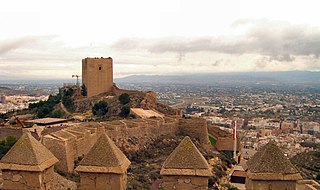
Lorca is a municipality and city in the autonomous community of the Region of Murcia in south-eastern Spain, 58 kilometres (36 mi) southwest of the city of Murcia. The municipality had a population of 95,515 in 2020, up from the 2001 census total of 77,477. Lorca is the municipality with the second largest surface area in Spain, 1,675.21 km2 (646.80 sq mi), after Cáceres. The city is home to Lorca Castle and the Collegiate church dedicated to St. Patrick.
An earthquake of magnitude 5.1 hits Lorca, Spain.

The 2011 Lorca earthquake was a moderate 5.1 Mw earthquake that occurred 6:47 p.m. CEST on 11 May 2011, near the town of Lorca, causing significant localized damage in the Region of Murcia, Spain, and panic among locals, and displacing many from their homes. The quake was preceded by a magnitude 4.4 foreshock at 17:05, that inflicted substantial damage to many older structures in the area, including the historical Espolón Tower of Lorca Castle, the Hermitage of San Clemente and the Convent of Virgen de Las Huertas. Three people were killed by a falling cornice. A total of nine deaths have been confirmed, while dozens are reported injured. The earthquake was the worst to hit the region since a 5.0 Mw tremor struck west of Albolote, Granada in 1956.

Lorca is a municipality and city in the autonomous community of the Region of Murcia in south-eastern Spain, 58 kilometres (36 mi) southwest of the city of Murcia. The municipality had a population of 95,515 in 2020, up from the 2001 census total of 77,477. Lorca is the municipality with the second largest surface area in Spain, 1,675.21 km2 (646.80 sq mi), after Cáceres. The city is home to Lorca Castle and the Collegiate church dedicated to St. Patrick.
David Cameron took office as Prime Minister of the United Kingdom as the Conservatives and Liberal Democrats formed the country's first coalition government since the Second World War.

David William Donald Cameron is a British former politician who served as Prime Minister of the United Kingdom from 2010 to 2016 and Leader of the Conservative Party from 2005 to 2016. He previously served as Leader of the Opposition from 2005 to 2010, and was Member of Parliament (MP) for Witney from 2001 to 2016. He identifies as a one-nation conservative, and has been associated with both economically liberal and socially liberal policies.

The prime minister of the United Kingdom is the head of government of the United Kingdom. The prime minister advises the sovereign on the exercise of much of the royal prerogative, chairs the Cabinet and selects its ministers. As modern prime ministers hold office by virtue of their ability to command the confidence of the House of Commons, they sit as members of Parliament.
The Conservative Party, officially the Conservative and Unionist Party and also known colloquially as the Tories, is one of the two main political parties in the United Kingdom, along with the Labour Party. It is the current governing party, having won the 2019 general election. It has been the primary governing party in Britain since 2010. The party is on the centre-right of the political spectrum, and encompasses various ideological factions including one-nation conservatives, Thatcherites, and traditionalist conservatives. The party currently has 356 Members of Parliament, 261 members of the House of Lords, 9 members of the London Assembly, 31 members of the Scottish Parliament, 16 members of the Welsh Parliament, 2 directly elected mayors, 30 police and crime commissioners, and around 6,770 local councillors. It holds the annual Conservative Party Conference.

The Liberal Democrats are a liberal political party in the United Kingdom. Since the 1992 general election, with the exception of the 2015 general election, they have been the third-largest UK political party by the number of votes cast. They have 14 Members of Parliament in the House of Commons, 83 members of the House of Lords, four Members of the Scottish Parliament and one member in the Welsh Senedd. The party has over 2,500 local council seats. The party holds a twice-per-year Liberal Democrat Conference, at which party policy is formulated, with all party members eligible to vote, under a one member, one vote system. The party served as the junior party in a coalition government with the Conservative Party between 2010 and 2015; with Scottish Labour in the Scottish Executive from 1999 to 2007, and with Welsh Labour in the Welsh Government from 2000 to 2003 and from 2016 to 2021.
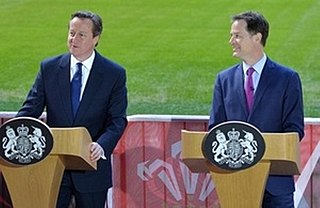
The Cameron–Clegg coalition was formed by David Cameron and Nick Clegg when Cameron was invited by Queen Elizabeth II to form a new administration, following the resignation of Prime Minister Gordon Brown on 11 May 2010, after the general election on 6 May. It was the UK's first coalition government since the Churchill caretaker ministry in 1945. The coalition was led by Cameron as Prime Minister with Clegg as Deputy Prime Minister and composed of members of both Cameron's centre-right Conservative Party and Clegg's centrist Liberal Democrats.
India began the Pokhran-II nuclear-weapons test, its first since the Smiling Buddha test 24 years earlier.
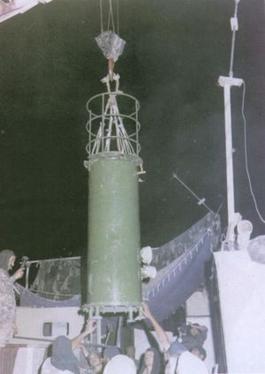
The Pokhran-II tests were a series of five nuclear bomb test explosions conducted by India at the Indian Army's Pokhran Test Range in May 1998. It was the second instance of nuclear testing conducted by India; the first test, code-named Smiling Buddha, was conducted in May 1974.

Nuclear weapons tests are experiments carried out to determine nuclear weapons' effectiveness, yield, and explosive capability. Testing nuclear weapons offers practical information about how the weapons function, how detonations are affected by different conditions, and how personnel, structures, and equipment are affected when subjected to nuclear explosions. However, nuclear testing has often been used as an indicator of scientific and military strength. Many tests have been overtly political in their intention; most nuclear weapons states publicly declared their nuclear status through a nuclear test.

Operation Smiling Buddha was the assigned code name of India's first successful nuclear bomb test on 18 May 1974. The bomb was detonated on the army base Pokhran Test Range (PTR), in Rajasthan, by the Indian Army under the supervision of several key Indian generals.
India conducts three underground atomic tests in Pokhran.

The Pokhran-II tests were a series of five nuclear bomb test explosions conducted by India at the Indian Army's Pokhran Test Range in May 1998. It was the second instance of nuclear testing conducted by India; the first test, code-named Smiling Buddha, was conducted in May 1974.
Deep Blue (pictured) defeated Garry Kasparov in six games to become the first chess computer to win a match against a world champion.

Deep Blue was a chess-playing expert system run on a unique purpose-built IBM supercomputer. It was the first computer to win a game, and the first to win a match, against a reigning world champion under regular time controls. Development began in 1985 at Carnegie Mellon University under the name ChipTest. It then moved to IBM, where it was first renamed Deep Thought, then again in 1989 to Deep Blue. It first played world champion Garry Kasparov in a six-game match in 1996, where it lost four games to two. It was upgraded in 1997 and in a six-game re-match, it defeated Kasparov by winning three games and drawing one. Deep Blue's victory is considered a milestone in the history of artificial intelligence and has been the subject of several books and films.

Garry Kimovich Kasparov is a Russian chess grandmaster, former World Chess Champion, writer, political activist and commentator. His peak rating of 2851, achieved in 1999, was the highest recorded until being surpassed by Magnus Carlsen in 2013. From 1984 until his retirement in 2005, Kasparov was ranked world No. 1 for a record 255 months overall for his career, the most in history. Kasparov also holds records for the most consecutive professional tournament victories (15) and Chess Oscars (11).

Deep Blue versus Garry Kasparov was a pair of six-game chess matches between the world chess champion Garry Kasparov and an IBM supercomputer called Deep Blue. The first match was played in Philadelphia in 1996 and won by Kasparov by 4–2. A rematch was played in New York City in 1997 and won by Deep Blue by 3½–2½. The second match was the first defeat of a reigning world chess champion by a computer under tournament conditions, and was the subject of a documentary film, Game Over: Kasparov and the Machine.
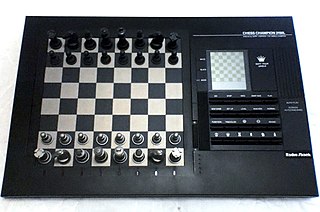
Computer chess includes both hardware and software capable of playing chess. Computer chess provides opportunities for players to practice even in the absence of human opponents, and also provides opportunities for analysis, entertainment and training.
The following is a list of World Chess Championships, including the hosting cities.
Deep Blue, a chess-playing supercomputer, defeats Garry Kasparov in the last game of the rematch, becoming the first computer to beat a world-champion chess player in a classic match format.

Deep Blue was a chess-playing expert system run on a unique purpose-built IBM supercomputer. It was the first computer to win a game, and the first to win a match, against a reigning world champion under regular time controls. Development began in 1985 at Carnegie Mellon University under the name ChipTest. It then moved to IBM, where it was first renamed Deep Thought, then again in 1989 to Deep Blue. It first played world champion Garry Kasparov in a six-game match in 1996, where it lost four games to two. It was upgraded in 1997 and in a six-game re-match, it defeated Kasparov by winning three games and drawing one. Deep Blue's victory is considered a milestone in the history of artificial intelligence and has been the subject of several books and films.

Game 6 of the Deep Blue–Kasparov rematch, played in New York City on May 11, 1997 and starting at 3:00 p.m. EDT, was the last chess game in the 1997 rematch of Deep Blue versus Garry Kasparov.
After the aircraft's departure from Miami, a fire started by improperly handled chemical oxygen generators in the cargo hold of Atlanta-bound ValuJet Airlines Flight 592 causes the Douglas DC-9 to crash in the Florida Everglades, killing all 110 on board.
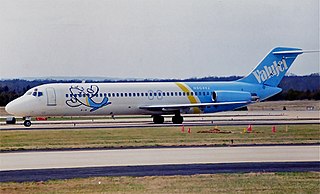
ValuJet Airlines Flight 592 was a regularly scheduled flight from Miami International Airport to Hartsfield–Jackson Atlanta International Airport. On May 11, 1996, the ValuJet Airlines McDonnell Douglas DC-9 operating the route crashed into the Everglades about 10 minutes after taking off from Miami as a result of a fire in the cargo compartment caused by mislabeled and improperly stored hazardous cargo. All 110 people on board died. The airline already had a poor safety record before the crash, and the accident brought widespread attention to the airline's problems. The airline was grounded for several months after the accident. When operations resumed, ValuJet was unable to attract the same amount of customers that it had before the accident. It acquired AirTran in 1997, but the lingering damage to the ValuJet name led ValuJet executives to assume the AirTran name.
Fifty-six spectators die and more than 200 are injured in the Bradford City stadium fire.

The Bradford City stadium fire occurred during a Football League Third Division match on Saturday, 11 May 1985 at the Valley Parade stadium in Bradford, West Yorkshire, England, killing 56 spectators and injuring at least 265. The stadium was known for its antiquated design and facilities, which included the wooden roof of the main stand. Previous warnings had also been given about a major build-up of litter in the cavity below the seats in the stand. The stand had been officially condemned and was due to be replaced with a steel structure after the season ended.
Andrew Lloyd Webber's Cats, the first megamusical, opened at the New London Theatre to become an unprecedented commercial success.

Andrew Lloyd Webber, Baron Lloyd-Webber, is an English composer and impresario of musical theatre. Several of his musicals have run for more than a decade both in the West End and on Broadway. He has composed 21 musicals, a song cycle, a set of variations, two film scores, and a Latin Requiem Mass.

Cats is a sung-through musical composed by Andrew Lloyd Webber, based upon the 1939 poetry collection Old Possum's Book of Practical Cats by T. S. Eliot. It tells the story of a tribe of cats called the Jellicles and the night they make the "Jellicle choice" by deciding which cat will ascend to the Heaviside layer and come back to a new life. As of 2022, Cats remains the fourth-longest-running Broadway show and the seventh-longest-running West End show.
A megamusical is a large-scale musical produced for large commercial profit. Such musicals utilize spectacle and increased technology to "radicalize the imagistic potential of musical theatre." Early concepts of the megamusical came into existence in the 1970s, and the form was established and popularized in the 1980s by individuals such as Andrew Lloyd Webber and Cameron Mackintosh. Megamusical is analogous to the film industry term "blockbuster".

The Gillian Lynne Theatre is a West End theatre located on the corner of Drury Lane and Parker Street in Covent Garden, in the London Borough of Camden. The Winter Garden Theatre formerly occupied the site until 1965. On 1 May 2018, the theatre was officially renamed the Gillian Lynne Theatre in honour of Gillian Lynne. It is the first theatre in the West End of London to be named after a non-royal woman.
The 1970 Lubbock tornado kills 26 and causes $250 million in damage.
Portions of Lubbock, Texas, were struck by a powerful multiple-vortex tornado after nightfall on May 11, 1970, resulting in 26 fatalities and at least $135 million in damage. It was in its time the costliest tornado in U.S. history, damaging nearly 9,000 homes and inflicting widespread damage to businesses, high-rise buildings, and public infrastructure. The tornado's damage was surveyed by meteorologist Ted Fujita in what researcher Thomas P. Grazulis described as "the most detailed mapping ever done, up to that time, of the path of a single tornado." The most severe damage was assigned an F5 rating by Fujita when he introduced his eponymous scale for rating tornadoes in 1971. The extremity of the damage and the force required to displace heavy objects as much as was observed indicated that winds produced by vortices within the tornado may have reached as high as 290 mph (470 km/h).
African Americans rioted in Birmingham, Alabama, in response to two bombings, perceiving local police to be complicit with the perpetrators.
The Birmingham riot of 1963 was a civil disorder and riot in Birmingham, Alabama, that was provoked by bombings on the night of May 11, 1963. The bombings targeted African-American leaders of the Birmingham campaign, but ended in the murder of three adolescent girls. The places bombed were the parsonage of Rev. A. D. King, brother of Martin Luther King Jr., and a motel owned by A. G. Gaston, where King and others organizing the campaign had stayed. It is believed that the bombings were carried out by members of the Ku Klux Klan, in cooperation with Birmingham police. In response, local African-Americans burned businesses and fought police throughout the downtown area.
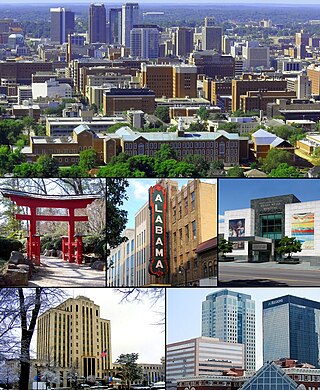
Birmingham is a city in the north central region of the U.S. state of Alabama. Birmingham is the seat of Jefferson County, Alabama's most populous county. As of the 2021 census estimates, Birmingham had a population of 197,575, down 1% from the 2020 Census, making it Alabama's third-most populous city after Huntsville and Montgomery. The broader Birmingham metropolitan area had a 2020 population of 1,115,289, and is the largest metropolitan area in Alabama as well as the 50th-most populous in the United States. Birmingham serves as an important regional hub and is associated with the Deep South, Piedmont, and Appalachian regions of the nation.
After a week-long standoff punctuated by military clashes, Japanese forces captured the city of Jinan, Shandong in China.

The Jinan incident or 3 May Tragedy began as a 3 May 1928 dispute between Chiang Kai-shek's National Revolutionary Army (NRA) and Japanese soldiers and civilians in Jinan, the capital of Shandong province in China, which then escalated into an armed conflict between the NRA and the Imperial Japanese Army. Japanese soldiers had been deployed to Shandong province to protect Japanese commercial interests in the province, which were threatened by the advance of Chiang's Northern Expedition to reunite China under a Kuomintang government. When the NRA approached Jinan, the Beiyang government-aligned army of Sun Chuanfang withdrew from the area, allowing for the peaceful capture of the city by the NRA. NRA forces initially managed to coexist with Japanese troops stationed around the Japanese consulate and businesses, and Chiang Kai-shek arrived to negotiate their withdrawal on 2 May. This peace was broken the following morning, however, when a dispute between the Chinese and Japanese resulted in the deaths of 13–16 Japanese civilians. The resulting conflict resulted in thousands of casualties on the NRA side, which fled the area to continue northwards toward Beijing, and left the city under Japanese occupation until March 1929.

Jinan, alternately romanized as Tsinan, is the capital of Shandong province in Eastern China. With a population of 9.2 million, it is the second-largest city in Shandong. The area of present-day Jinan has played an important role in the history of the region from the earliest beginnings of civilization and has evolved into a major national administrative, economic, and transportation hub. The city has held sub-provincial administrative status since 1994. Jinan is often called the "City of Springs" for its famous 72 artesian springs.

Shandong is a coastal province of the People's Republic of China and is part of the East China region.
Glacier National Park was established in the U.S. state of Montana.

Glacier National Park is an American national park located in northwestern Montana, on the Canada–United States border, adjacent to the Canadian provinces of Alberta and British Columbia. The park encompasses more than 1 million acres (4,000 km2) and includes parts of two mountain ranges, more than 130 named lakes, more than 1,000 different species of plants, and hundreds of species of animals. This vast pristine ecosystem is the centerpiece of what has been referred to as the "Crown of the Continent Ecosystem," a region of protected land encompassing 16,000 square miles (41,000 km2).

Montana is a state in the Mountain West division of the Western United States. It is bordered by Idaho to the west, North Dakota and South Dakota to the east, Wyoming to the south, and the Canadian provinces of Alberta, British Columbia, and Saskatchewan to the north. It is the fourth-largest state by area, the eighth-least populous state, and the third-least densely populated state. Its state capital is Helena. The western half of Montana contains numerous mountain ranges, while the eastern half is characterized by western prairie terrain and badlands, with smaller mountain ranges found throughout the state.
In response to a 28-percent wage cut, 4,000 Pullman Palace Car Company workers went on strike in Illinois, bringing rail traffic west of Chicago to a halt.

The Pullman Company, founded by George Pullman, was a manufacturer of railroad cars in the mid-to-late 19th century through the first half of the 20th century, during the boom of railroads in the United States. Through rapid late-19th century development of mass production and takeover of rivals, the company developed a virtual monopoly on production and ownership of sleeper cars. During a severe economic downturn, the 1894 Pullman Strike by company workers proved a transforming moment in American labor history. At the company's peak in the early 20th century, its cars accommodated 26 million people a year, and it in effect operated "the largest hotel in the world". Its production workers initially lived in a planned worker community named Pullman, Chicago.

The Pullman Strike was two interrelated strikes in 1894 that shaped national labor policy in the United States during a period of deep economic depression. First came a strike by the American Railway Union (ARU) against the Pullman factory in Chicago in spring 1894. When it failed, the ARU launched a national boycott against all trains that carried Pullman passenger cars. The nationwide railroad boycott that lasted from May 11 to July 20, 1894, was a turning point for US labor law. It pitted the American Railway Union (ARU) against the Pullman Company, the main railroads, the main labor unions, and the federal government of the United States under President Grover Cleveland. The strike and boycott shut down much of the nation's freight and passenger traffic west of Detroit, Michigan. The conflict began in Chicago, on May 11 when nearly 4,000 factory employees of the Pullman Company began a wildcat strike in response to recent reductions in wages. Most of the factory workers who built Pullman cars lived in the "company town" of Pullman just outside of Chicago. It was designed as a model community by its namesake founder and owner George Pullman.

Illinois is a state in the Midwestern United States. Chicago is its largest city, and the state's capital is Springfield; other major metropolitan areas include Metro East, Peoria and Rockford. Of the fifty U.S. states, Illinois has the fifth-largest gross domestic product (GDP), the sixth-largest population, and the 25th-largest land area.
Four thousand Pullman Palace Car Company workers go on a wildcat strike.

The Pullman Strike was two interrelated strikes in 1894 that shaped national labor policy in the United States during a period of deep economic depression. First came a strike by the American Railway Union (ARU) against the Pullman factory in Chicago in spring 1894. When it failed, the ARU launched a national boycott against all trains that carried Pullman passenger cars. The nationwide railroad boycott that lasted from May 11 to July 20, 1894, was a turning point for US labor law. It pitted the American Railway Union (ARU) against the Pullman Company, the main railroads, the main labor unions, and the federal government of the United States under President Grover Cleveland. The strike and boycott shut down much of the nation's freight and passenger traffic west of Detroit, Michigan. The conflict began in Chicago, on May 11 when nearly 4,000 factory employees of the Pullman Company began a wildcat strike in response to recent reductions in wages. Most of the factory workers who built Pullman cars lived in the "company town" of Pullman just outside of Chicago. It was designed as a model community by its namesake founder and owner George Pullman.
An attack upon a U.S. Army paymaster and escort resulted in the theft of over $28,000 and the award of two Medals of Honor.

The Wham Paymaster robbery was an armed robbery of a United States Army paymaster and his escort on May 11, 1889, in the Arizona Territory. Major Joseph W. Wham was transporting a payroll consisting of more than US$28,000 in gold and silver coins from Fort Grant to Fort Thomas when he and his escort of eleven Buffalo Soldiers were ambushed. During the attack, the bandits wounded eight of the soldiers, forced them to retreat to cover and stole the payroll. As a result of their actions under fire, Sergeant Benjamin Brown and Corporal Isaiah Mays were awarded the Medal of Honor while eight other soldiers received a Certificate of Merit. Eleven men, most from the nearby Mormon community of Pima, were arrested, with eight of them ultimately tried on charges of robbery. All of the accused were found not guilty, and the stolen money has never been recovered.

The Medal of Honor (MOH) is the United States Armed Forces' highest military decoration and is awarded to recognize American soldiers, sailors, marines, airmen, guardians and coast guardsmen who have distinguished themselves by acts of valor. The medal is normally awarded by the president of the United States, but as it is presented "in the name of the United States Congress", it is sometimes erroneously referred to as the "Congressional Medal of Honor".
An attack upon a U.S. Army paymaster and escort results in the theft of over $28,000 and the award of two Medals of Honor.

The Wham Paymaster robbery was an armed robbery of a United States Army paymaster and his escort on May 11, 1889, in the Arizona Territory. Major Joseph W. Wham was transporting a payroll consisting of more than US$28,000 in gold and silver coins from Fort Grant to Fort Thomas when he and his escort of eleven Buffalo Soldiers were ambushed. During the attack, the bandits wounded eight of the soldiers, forced them to retreat to cover and stole the payroll. As a result of their actions under fire, Sergeant Benjamin Brown and Corporal Isaiah Mays were awarded the Medal of Honor while eight other soldiers received a Certificate of Merit. Eleven men, most from the nearby Mormon community of Pima, were arrested, with eight of them ultimately tried on charges of robbery. All of the accused were found not guilty, and the stolen money has never been recovered.

The Medal of Honor (MOH) is the United States Armed Forces' highest military decoration and is awarded to recognize American soldiers, sailors, marines, airmen, guardians and coast guardsmen who have distinguished themselves by acts of valor. The medal is normally awarded by the president of the United States, but as it is presented "in the name of the United States Congress", it is sometimes erroneously referred to as the "Congressional Medal of Honor".
A land dispute between the Southern Pacific Railroad and settlers in Hanford, California, turned deadly when a gun battle broke out, leaving seven dead.

The Southern Pacific was an American Class I railroad network that existed from 1865 to 1996 and operated largely in the Western United States. The system was operated by various companies under the names Southern Pacific Railroad, Southern Pacific Company and Southern Pacific Transportation Company.

Hanford is a city and county seat of Kings County, California, located in the San Joaquin Valley region of the greater Central Valley. The population was 53,967 at the 2010 census.

The Mussel Slough Tragedy was a dispute over land titles between settlers and the Southern Pacific Railroad (SP) that took place on May 11, 1880, on a farm located 5.6 miles (9 km) northwest of Hanford, California, in the central San Joaquin Valley, leaving seven people dead.
Seven people are killed in the Mussel Slough Tragedy, a gun battle in California.

The Mussel Slough Tragedy was a dispute over land titles between settlers and the Southern Pacific Railroad (SP) that took place on May 11, 1880, on a farm located 5.6 miles (9 km) northwest of Hanford, California, in the central San Joaquin Valley, leaving seven people dead.
The major powers of Europe signed the Treaty of London to resolve a crisis over the political status of Luxembourg between France and Prussia.

The Treaty of London, often called the Second Treaty of London after the 1839 Treaty, granted Luxembourg full independence and neutrality. It was signed on 11 May 1867 in the aftermath of the Austro-Prussian War and the Luxembourg Crisis. It had wide-reaching consequences for Luxembourg and for relations among Europe's great powers.

The Luxembourg Crisis was a diplomatic dispute and confrontation in 1867 between France and Prussia over the political status of Luxembourg.
Minnesota was carved out of the eastern half of the Minnesota Territory and admitted as the 32nd U.S. state.

Minnesota is a state in the upper midwestern region of the United States. It is the 12th largest U.S. state in area and the 22nd most populous, with over 5.75 million residents. Minnesota is home to western prairies, now given over to intensive agriculture; deciduous forests in the southeast, now partially cleared, farmed, and settled; and the less populated North Woods, used for mining, forestry, and recreation. Roughly a third of the state is covered in forests, and it is known as the "Land of 10,000 Lakes" for having over 14,000 bodies of fresh water of at least ten acres. More than 60% of Minnesotans live in the Minneapolis–Saint Paul metropolitan area, known as the "Twin Cities", the state's main political, economic, and cultural hub. With a population of about 3.7 million, the Twin Cities is the 16th largest metropolitan area in the U.S. Other minor metropolitan and micropolitan statistical areas in the state include Duluth, Mankato, Moorhead, Rochester, and St. Cloud.

The Territory of Minnesota was an organized incorporated territory of the United States that existed from March 3, 1849, until May 11, 1858, when the eastern portion of the territory was admitted to the Union as the State of Minnesota and western portion to the unorganized territory then the land shortly became the Dakota territory.
Indian Rebellion of 1857: Indian rebels seize Delhi from the British.

The Indian Rebellion of 1857 was a major uprising in India in 1857–58 against the rule of the British East India Company, which functioned as a sovereign power on behalf of the British Crown. The rebellion began on 10 May 1857 in the form of a mutiny of sepoys of the Company's army in the garrison town of Meerut, 40 mi (64 km) northeast of Delhi. It then erupted into other mutinies and civilian rebellions chiefly in the upper Gangetic plain and central India, though incidents of revolt also occurred farther north and east. The rebellion posed a considerable threat to British power in that region, and was contained only with the rebels' defeat in Gwalior on 20 June 1858. On 1 November 1858, the British granted amnesty to all rebels not involved in murder, though they did not declare the hostilities to have formally ended until 8 July 1859. Its name is contested, and it is variously described as the Sepoy Mutiny, the Indian Mutiny, the Great Rebellion, the Revolt of 1857, the Indian Insurrection, and the First War of Independence.
William Lawson, Gregory Blaxland and William Wentworth departed westward from Sydney on an expedition to become the first confirmed Europeans to cross the Blue Mountains (depicted).

William Lawson, MLC was a British soldier, explorer, land owner, grazier and politician who migrated to Sydney, New South Wales in 1800. Along with Gregory Blaxland and William Wentworth, he pioneered the first successful crossing of the Blue Mountains by British colonists.

Gregory Blaxland was an English pioneer farmer and explorer in Australia, noted especially for initiating and co-leading the first successful crossing of the Blue Mountains by European settlers.
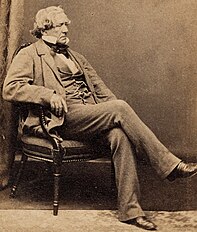
William Charles Wentworth was an Australian pastoralist, explorer, newspaper editor, lawyer, politician and author, who became one of the wealthiest and most powerful figures of early colonial New South Wales.
Sydney is the capital city of the state of New South Wales, and the most populous city in both Australia and Oceania. Located on Australia's east coast, the metropolis surrounds Sydney Harbour and extends about 70 km (43.5 mi) towards the Blue Mountains to the west, Hawkesbury to the north, the Royal National Park to the south and Macarthur to the south-west. Sydney is made up of 658 suburbs, spread across 33 local government areas. Residents of the city are known as "Sydneysiders". The 2021 census recorded the population of Greater Sydney as 5,231,150, meaning the city is home to approximately 66% of the state's population. Nicknames of the city include the 'Emerald City' and the 'Harbour City'.

The 1813 crossing of the Blue Mountains was the expedition led by Gregory Blaxland, William Lawson and William Charles Wentworth, which became the first successful crossing of the Blue Mountains in New South Wales by European settlers. The crossing enabled the settlers to access and use the land west of the mountains for farming, and made possible the establishment of Australia's first inland colonial settlement at Bathurst.

The Blue Mountains are a mountainous region and a mountain range located in New South Wales, Australia. The region borders on Sydney's metropolitan area, its foothills starting about 50 kilometres (31 mi) west of centre of the state capital, close to Penrith on the outskirts of Greater Sydney region. The public's understanding of the extent of the Blue Mountains is varied, as it forms only part of an extensive mountainous area associated with the Great Dividing Range. As defined in 1970, the Blue Mountains region is bounded by the Nepean and Hawkesbury rivers in the east, the Coxs River and Lake Burragorang to the west and south, and the Wolgan and Colo rivers to the north. Geologically, it is situated in the central parts of the Sydney Basin.
William Lawson, Gregory Blaxland and William Wentworth discover a route across the Blue Mountains, opening up inland Australia to settlement.

William Lawson, MLC was a British soldier, explorer, land owner, grazier and politician who migrated to Sydney, New South Wales in 1800. Along with Gregory Blaxland and William Wentworth, he pioneered the first successful crossing of the Blue Mountains by British colonists.

Gregory Blaxland was an English pioneer farmer and explorer in Australia, noted especially for initiating and co-leading the first successful crossing of the Blue Mountains by European settlers.

William Charles Wentworth was an Australian pastoralist, explorer, newspaper editor, lawyer, politician and author, who became one of the wealthiest and most powerful figures of early colonial New South Wales.

The 1813 crossing of the Blue Mountains was the expedition led by Gregory Blaxland, William Lawson and William Charles Wentworth, which became the first successful crossing of the Blue Mountains in New South Wales by European settlers. The crossing enabled the settlers to access and use the land west of the mountains for farming, and made possible the establishment of Australia's first inland colonial settlement at Bathurst.
Spencer Perceval was shot in the lobby of the House of Commons, becoming the only British prime minister to be assassinated.

Spencer Perceval was a British statesman and barrister who served as Prime Minister of the United Kingdom from October 1809 until his assassination in May 1812. Perceval is the only British prime minister to have been assassinated, and the only solicitor-general or attorney-general to have become prime minister.

On 11 May 1812, at about 5:15 pm, Spencer Perceval, the prime minister of the United Kingdom of Great Britain and Ireland, was shot dead in the lobby of the House of Commons by John Bellingham, a Liverpool merchant with a grievance against the government. Bellingham was detained and, four days after the murder, was tried, convicted and sentenced to death. He was hanged at Newgate Prison on 18 May, one week after the assassination and one month before the start of the War of 1812. Perceval remains the only British prime minister to have been assassinated.

The House of Commons is the lower house of the Parliament of the United Kingdom. Like the upper house, the House of Lords, it meets in the Palace of Westminster in London, England.

The prime minister of the United Kingdom is the head of government of the United Kingdom. The prime minister advises the sovereign on the exercise of much of the royal prerogative, chairs the Cabinet and selects its ministers. As modern prime ministers hold office by virtue of their ability to command the confidence of the House of Commons, they sit as members of Parliament.
Prime Minister Spencer Perceval is assassinated by John Bellingham in the lobby of the British House of Commons.

Spencer Perceval was a British statesman and barrister who served as Prime Minister of the United Kingdom from October 1809 until his assassination in May 1812. Perceval is the only British prime minister to have been assassinated, and the only solicitor-general or attorney-general to have become prime minister.

On 11 May 1812, at about 5:15 pm, Spencer Perceval, the prime minister of the United Kingdom of Great Britain and Ireland, was shot dead in the lobby of the House of Commons by John Bellingham, a Liverpool merchant with a grievance against the government. Bellingham was detained and, four days after the murder, was tried, convicted and sentenced to death. He was hanged at Newgate Prison on 18 May, one week after the assassination and one month before the start of the War of 1812. Perceval remains the only British prime minister to have been assassinated.

John Bellingham was an English merchant and perpetrator of the 1812 murder of Spencer Perceval, the only British prime minister to be assassinated.
War of the Austrian Succession: French forces defeated those of the Pragmatic Allies at the Battle of Fontenoy in the Austrian Netherlands in present-day Belgium.

The War of the Austrian Succession was a European conflict that took place between 1740 and 1748. Fought primarily in Central Europe, the Austrian Netherlands, Italy, the Atlantic and Mediterranean, related conflicts included King George's War in North America, the War of Jenkins' Ear, the First Carnatic War and the First and Second Silesian Wars.
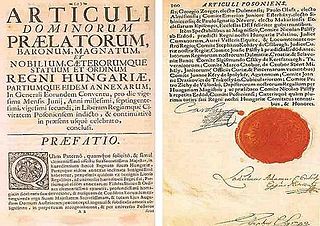
The Pragmatic Sanction was an edict issued by Charles VI, Holy Roman Emperor, on 19 April 1713 to ensure that the Habsburg hereditary possessions, which included the Archduchy of Austria, the Kingdom of Hungary, the Kingdom of Croatia, the Kingdom of Bohemia, the Duchy of Milan, the Kingdom of Naples, the Kingdom of Sardinia and the Austrian Netherlands, could be inherited by a daughter.

The Battle of Fontenoy was a major engagement of the War of the Austrian Succession, fought on 11 May 1745 near Tournai in modern Belgium. A French army of 50,000 under Marshal Saxe defeated a Pragmatic Army of roughly the same size, led by the Duke of Cumberland.

The Southern Netherlands, also called the Catholic Netherlands, were the parts of the Low Countries belonging to the Holy Roman Empire which were at first largely controlled by Habsburg Spain and later by the Austrian Habsburgs until occupied and annexed by Revolutionary France (1794–1815).
A copy of the Diamond Sutra was printed in Tang-dynasty China, making it the world's oldest dated printed book.

The Diamond Sutra is a Mahāyāna (Buddhist) sutra from the genre of Prajñāpāramitā sutras. Translated into a variety of languages over a broad geographic range, the Diamond Sūtra is one of the most influential Mahayana sutras in East Asia, and it is particularly prominent within the Chan tradition, along with the Heart Sutra.

The Tang dynasty, or Tang Empire, was an imperial dynasty of China that ruled from 618 to 907 AD, with an interregnum between 690 and 705. It was preceded by the Sui dynasty and followed by the Five Dynasties and Ten Kingdoms period. Historians generally regard the Tang as a high point in Chinese civilization, and a golden age of cosmopolitan culture. Tang territory, acquired through the military campaigns of its early rulers, rivaled that of the Han dynasty.
Colt Brennan, American quarterback (b. 1983) deaths

Colton James Brennan was an American football quarterback. He played college football for the Hawaii Rainbow Warriors, where he was a two-time, third-team All-American before being selected by the Washington Redskins of the National Football League (NFL) in the sixth round of the 2008 NFL Draft.
Norman Lloyd, American actor, producer and director (b. 1914) deaths

Norman Nathan Lloyd was an American actor, producer, and director with a career in entertainment spanning nearly a century. He worked in every major facet of the industry, including theatre, radio, television, and film, with a career that started in 1923. Lloyd's final film, Trainwreck, was released in 2015, after he turned 100.
Jerry Stiller, American comedian, actor (b. 1927) deaths

Gerald Isaac Stiller was an American actor and comedian. He spent many years as part of the comedy duo Stiller and Meara with his wife, Anne Meara, to whom he was married for over 60 years until her death in 2015. Stiller saw a late-career resurgence starting in 1993, playing George Costanza's father Frank on the sitcom Seinfeld, a part which earned him an Emmy nomination. The year Seinfeld went off the air, Stiller began his role as the eccentric Arthur Spooner on the CBS comedy series The King of Queens, another role that garnered widespread acclaim.
Peggy Lipton, American actress, model, and singer (b. 1946) deaths

Margaret Ann Lipton was an American actress, model, and singer. She made appearances in many of the most popular television shows of the 1960s before she landed her defining role as flower child Julie Barnes in the crime drama The Mod Squad (1968–1973), for which she won the Golden Globe Award for Best Actress – Television Series Drama in 1970.
Thomas Silverstein, American murderer (b. 1952) deaths
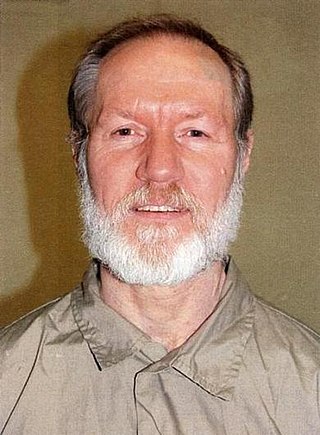
Thomas Edward Silverstein was an American criminal who spent the last 42 years of his life in prison after being convicted of four separate murders while imprisoned for armed robbery, one of which was overturned. Silverstein spent the last 36 years of his life in solitary confinement for killing Corrections Officer Merle Clutts at the Marion Penitentiary in Illinois. Prison authorities described him as a brutal killer and a former leader of the Aryan Brotherhood prison gang. Silverstein maintained that the dehumanizing conditions inside the prison system contributed to the three murders he committed. He was held "in a specially designed cell" in what is called "Range 13" at ADX Florence federal penitentiary in Colorado. He was the longest-held prisoner in solitary confinement within the Bureau of Prisons at the time of his death. Many prison guards refused to talk to Silverstein out of respect for Clutts.
Robert Traylor, American basketball player (b. 1977) deaths

Robert DeShaun "Tractor" Traylor was an American professional basketball player. He got his nickname because of his hulking frame. Traylor was the sixth pick in the 1998 NBA draft and played seven seasons in the league. He averaged 4.8 points per game, mainly as a reserve center and forward.
Doris Eaton Travis, American dancer and vaudevillian (b. 1904) deaths
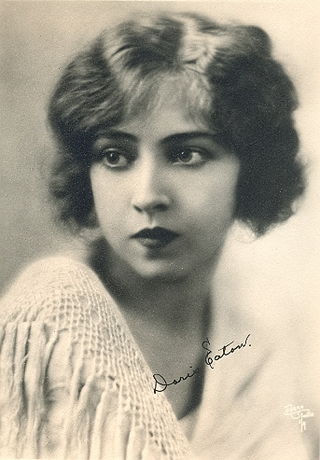
Doris Eaton Travis was an American dancer, stage and film actress, dance instructor, owner and manager, writer, and rancher, who was the last surviving Ziegfeld Girl, a troupe of acclaimed chorus girls who performed as members in the Broadway theatrical revues of the Ziegfeld Follies.
Abel Goumba, Central African physician and politician, Prime Minister of the Central African Republic (b. 1926) deaths

Abel Nguéndé Goumba was a Central African political figure. During the late 1950s, he headed the government in the period prior to independence from France, and following independence he was an unsuccessful candidate for President of the Central African Republic four times. Goumba, who was President of the Patriotic Front for Progress (FPP) political party, served under President François Bozizé as Prime Minister from March 2003 to December 2003 and then as Vice President from December 2003 to March 2005. Subsequently, he was appointed to the official post of Ombudsman.

This article lists the heads of government of the Central African Republic. There have been twenty-five heads of government of the Central African Republic and the Central African Empire. The office of Prime Minister, the head of government, was created when the Central African Republic became an autonomous territory of France in December 1958. It was originally the highest post of the Central African Republic, though France did maintain a governor in the territory. After the Central African Republic declared its independence and became a republic on 13 August 1960, David Dacko held both the Prime Minister and newly created President of the Central African Republic posts briefly before eliminating the Prime Minister position and placing all executive power in the office of the President.
Claudio Huepe, Chilean economist and politician, Chilean Minister Secretary-General of Government (b. 1939) deaths

Claudio Huepe García was a Chilean politician, engineer and economist, member of the Christian Democrat party, who occupied several government and political positions. During his career, he was the provincial governor of Arauco, a member of the Chilean Chamber of Deputies, a government minister, and the Chilean ambassador to Venezuela. He was also among the first in his party to reject the 1973 coup by Pinochet and was exiled by the military dictatorship from 1975 until 1984.

The Ministry General Secretariat of Government (Segegob) is the cabinet-level administrative office charged with acting as the government's organ of communication. The principal function of the Minister Secretary General of Government and his or her staff is to serve as the spokesperson of the government. The current Minister Secretary General of Government is Camila Vallejo.
Sardarilal Mathradas Nanda, Indian admiral (b. 1915) deaths

Admiral Sardarilal Mathradas 'Charles' Nanda, PVSM, AVSM was an Indian Navy admiral who served as the 7th Chief of the Naval Staff from 1 March 1970 until 28 February 1973. He led the Indian Navy during the Indo-Pakistani War of 1971 and successfully executed a naval blockade of both West and East Pakistan, helping India achieve an overwhelming victory during the war. For his important role played in the war, Government of India awarded him with Padma Vibhushan, India's second highest civilian award. He is one of the most notable commanders in the history of the Indian Navy.
John Rutsey, Canadian drummer (b. 1953) deaths

John Howard Rutsey was a Canadian musician best known as a founding member and original drummer of Rush. He performed on the band's 1974 debut album, but left shortly after its release due to health problems which limited his ability to tour with the band. He was subsequently replaced by Neil Peart, who would remain the drummer of Rush on the band's future recordings and for the rest of its active history.
Malietoa Tanumafili II, Samoan ruler (b. 1913) deaths
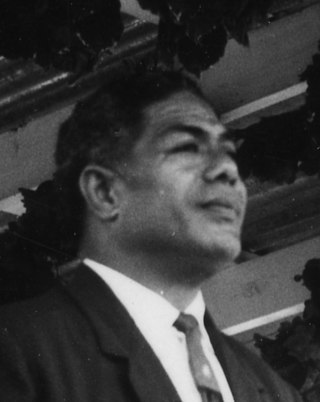
Malietoa Tanumafili II, addressed Susuga Malietoa Tanumafili II, was the Malietoa, the title of one of Samoa's four paramount chiefs, and the head of state, or O le Ao o le Malo, a position that he held for life, of Samoa from 1962 to 2007. He was co-head of state in 1962 with the tama-a-'aiga Tupua Tamasese Mea'ole and became the sole head of state on 15 April 1963 upon the death of his co-regent. At the time of his death, he was the oldest national leader in the world, and was also the last incumbent president-for-life in the world. His Highness Malietoa Tanumafili II was also the first head of state to be a follower of the Bahá’í Faith.
Floyd Patterson, American boxer and actor (b. 1935) deaths
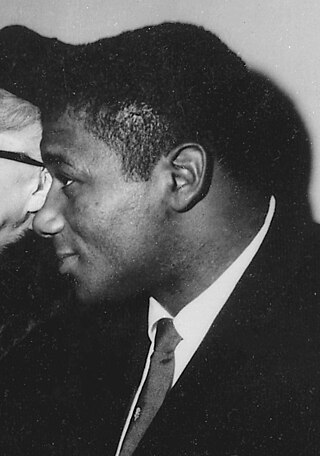
Floyd Patterson was an American professional boxer who competed from 1952 to 1972, and twice reigned as the world heavyweight champion between 1956 and 1962. At the age of 21, he became the youngest boxer in history to win the title, and was also the first heavyweight to regain the title after losing it. As an amateur, he won a gold medal in the middleweight division at the 1952 Summer Olympics.
Léo Cadieux, Canadian politician, 17th Canadian Minister of National Defence (b. 1908) deaths
Joseph Alphonse Léo Cadieux, was a Canadian politician.

The minister of national defence is a minister of the Crown in the Cabinet of Canada responsible for the management and direction of all matters relating to the national defence of Canada.
Noel Redding, English bass player (b. 1945) deaths

David Noel Redding was an English rock musician, best known as the bass player for the Jimi Hendrix Experience and guitarist/singer for Fat Mattress.
Renaude Lapointe, Canadian journalist and politician (b. 1912) deaths

Louise Marguerite Renaude Lapointe, was a Canadian journalist and a Senator. She was among the first Canadian women to work as a professional journalist and the first French-Canadian woman to preside over the Senate.
Bill Peet, American animator and screenwriter (b. 1915) deaths

William Bartlett Peet was an American children's book illustrator and a story writer and animator for Walt Disney Animation Studios.
Douglas Adams, English novelist and screenwriter (b. 1952) deaths
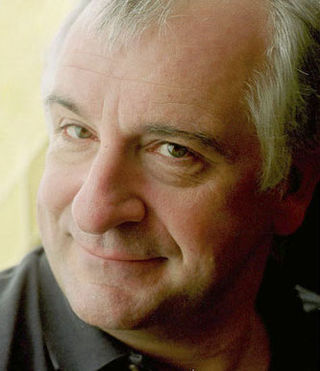
Douglas Noel Adams was an English author and screenwriter, best known for The Hitchhiker's Guide to the Galaxy. Originally a 1978 a BBC radio comedy, The Hitchhiker's Guide to the Galaxy developed into a "trilogy" of five books that sold more than 15 million copies in his lifetime. It was further developed into a television series, several stage plays, comics, a video game, and a 2005 feature film. Adams's contribution to UK radio is commemorated in The Radio Academy's Hall of Fame.
Sabrina Carpenter, American singer and actress births

Sabrina Annlynn Carpenter is an American singer and actress. Carpenter made her acting debut with an appearance in the television crime show Law & Order: Special Victims Unit and had a recurring role on Fox's short-lived series, The Goodwin Games, which lasted three months. She starred in the Disney Channel comedy series Girl Meets World (2014–2017); in 2016, she appeared in a television movie, Adventures in Babysitting, for the network.
Viktória Kužmová, Slovak tennis player births

Viktória Kužmová is a Slovak professional tennis player. She has been ranked as high as No. 43 in singles and No. 27 in doubles in the world by the Women's Tennis Association (WTA). Kužmová has won three WTA doubles titles and 21 titles on the ITF Circuit. She was also runner-up at the Premier-level 2019 St. Petersburg Trophy in the doubles event, along with Anna Kalinskaya.
Gelson Martins, Portuguese footballer births

Gelson Dany Batalha Martins is a Portuguese professional footballer who plays as a winger for Ligue 1 club Monaco and the Portugal national team.
Sachia Vickery, American tennis player births

Sachia Vickery is an American professional tennis player. She first entered the top 100 in 2018 and eventually reached a career-high of No. 73 in the world in the WTA rankings.
Hagos Gebrhiwet, Ethiopian runner births

Hagos Gebrhiwet Berhe is an Ethiopian long-distance runner and the former World Junior Record holder in the 5000 meters (12:47:53).
Nene Macdonald, Papua New Guinean rugby league player births
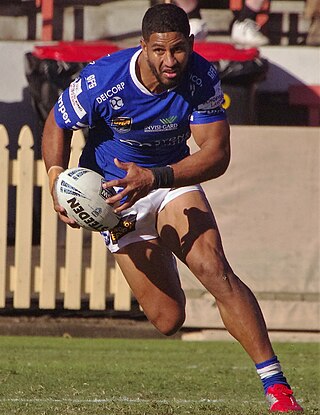
Nene Macdonald is a Papua New Guinean professional rugby league footballer who plays as a winger or centre for the Leeds Rhinos in the Super League and Papua New Guinea at international level.
Timothy Carey, American actor, director, and producer (b. 1928) deaths

Timothy Agoglia Carey was an American film and television character actor. Carey was best known for portraying manic or violent characters who are driven to extremes.
Maurice Harkless, American-Puerto Rican basketball player births

Maurice José "Moe" Harkless is an American-Puerto Rican professional basketball player who is currently a free agent. He played college basketball for the St. John's Red Storm before being drafted 15th overall, after his freshman season, in the 2012 NBA draft. Harkless has represented the Puerto Rican national team.
Thibaut Courtois, Belgian footballer births

Thibaut Nicolas Marc Courtois is a Belgian professional footballer who plays as a goalkeeper for La Liga club Real Madrid and the Belgium national team. He is considered one of the best goalkeepers in world football.
Pablo Sarabia, Spanish footballer births

Pablo Sarabia García is a Spanish professional footballer who plays for Ligue 1 club Paris Saint-Germain and the Spain national team. Mainly an attacking midfielder, he can also play as a right winger.
Alyssa Brown, Canadian artistic gymnast births
Alyssa Brown is a Canadian artistic gymnast.
Giovani dos Santos, Mexican international footballer births

Giovani dos Santos Ramírez is a Mexican professional footballer. A versatile forward, dos Santos can play as an attacking midfielder, winger, and secondary striker. He is an Olympic gold medalist.
Cam Newton, American football player births

Cameron Jerrell Newton is an American football quarterback who is a free agent. He has played for 11 seasons, primarily with the Carolina Panthers of the National Football League (NFL). Nicknamed "Super Cam", he is the NFL leader in quarterback rushing touchdowns and second in quarterback rushing yards. Newton had a college football stint at Florida before joining Auburn, where he won the Heisman Trophy and 2011 BCS National Championship Game as a junior. He was selected first overall by the Panthers in the 2011 NFL Draft.
Jeremy Maclin, American football player births

Jeremy Maclin is a former American football wide receiver. He played college football at Missouri, where he was a two-time consensus All-American, and was drafted by the Philadelphia Eagles in the first round of the 2009 NFL Draft. He also played for the Kansas City Chiefs and Baltimore Ravens, making a Pro Bowl appearance in 2014 with the Eagles. Maclin retired in 2019.
Brad Marchand, Canadian ice hockey player births

Brad Marchand is a Canadian professional ice hockey left winger and alternate captain for the Boston Bruins of the National Hockey League (NHL). The Bruins selected Marchand in the third round, 71st overall, of the 2006 NHL Entry Draft.
Kim Philby, British-Soviet double agent (b. 1912) deaths

Harold Adrian Russell "Kim" Philby was a British intelligence officer and a double agent for the Soviet Union. In 1963 he was revealed to be a member of the Cambridge Five, a spy ring which had divulged British secrets to the Soviets during World War II and in the early stages of the Cold War. Of the five, Philby is believed to have been most successful in providing secret information to the Soviets.
Lim Seul-ong, South Korean singer and actor births

Lim Seul-ong, also known by the mononym Seulong, is a South Korean singer and actor. He debuted as a singer in 2008 as a member of the K-pop boyband 2AM. He made his acting debut in 2010 in the Korean drama, Personal Taste.
Monica Roșu, Romanian gymnast births
Monica Roşu is a former artistic gymnast from Romania. During her career, she won two Olympic gold medals, a silver medal with the Romanian team at world championships, and two gold medals at the European Championships.
Abou Diaby, French footballer births

Vassiriki Abou Diaby, known as Abou Diaby, is a French former professional footballer. He played primarily in a box to box role, adept at both attacking and defending. Described as a player who was "languid, elusive, and athletic" that could either "dribble past opponents or slip passes to team-mates". Of Ivorian descent, Diaby also possessed "superb touch" and "excellent close control". Diaby's career was hampered by numerous repetitive injuries, a problem that existed from his time in France. His physical appearance and positional preference evoked comparisons to Arsenal legend and compatriot Patrick Vieira.
Miguel Veloso, Portuguese footballer births

Miguel Luís Pinto Veloso is a Portuguese professional footballer who plays for and captains Italian club Hellas Verona. Mainly a defensive midfielder, he can also operate as an attacking left-back.
Fritz Pollard, American football player and coach (b. 1894) deaths

Frederick Douglass "Fritz" Pollard was an American football player and coach. In 1921, he became the first African-American head coach in the National Football League (NFL). Pollard and Bobby Marshall were the first two African-American players in the NFL in 1920. Football pioneer Walter Camp called Pollard "one of the greatest runners these eyes have ever seen."
Beau Ryan, Australian rugby league player and television host births
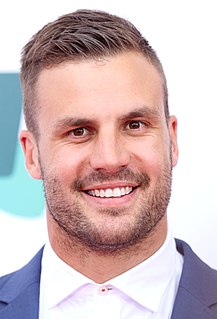
Beau Ryan is an Australian former professional rugby league footballer, television presenter, actor and singer who played for the Cronulla-Sutherland Sharks and the Wests Tigers in the National Rugby League. Ryan is also well known for his comedic work on The Footy Show. On 5 June 2014, Beau Ryan announced his immediate retirement whilst on The Footy Show, due to a neck injury. Beau Ryan released a single, "Where You From?" featuring Justice Crew on 19 September 2014.
Chester Gould, American cartoonist, created Dick Tracy (b. 1900) deaths
Chester Gould was an American cartoonist, best known as the creator of the Dick Tracy comic strip, which he wrote and drew from 1931 to 1977, incorporating numerous colorful and monstrous villains.

Dick Tracy is an American comic strip featuring Dick Tracy, a tough and intelligent police detective created by Chester Gould. It made its debut on Sunday, October 4, 1931, in the Detroit Mirror, and it was distributed by the Chicago Tribune New York News Syndicate. Gould wrote and drew the strip until 1977, and various artists and writers have continued it. Dick Tracy has also been the hero in a number of films, including Dick Tracy in which Warren Beatty played the lead in 1990. Tom De Haven praised Gould's Dick Tracy as an "outrageously funny American Gothic", while Brian Walker described it as a "ghoulishly entertaining creation" which had "gripping stories filled with violence and pathos".
Andrés Iniesta, Spanish footballer births
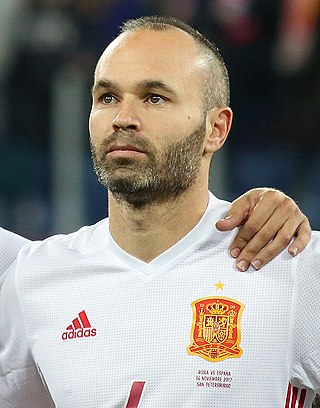
Andrés Iniesta Luján is a Spanish professional footballer who plays as a midfielder and is the captain of J1 League club Vissel Kobe. Considered one of the greatest midfielders of all time, Iniesta has spent most of his career at Barcelona, where he served as the captain for three seasons.
Matt Leinart, American football player births

Matthew Stephen Leinart is an American former professional football player who was a quarterback in the National Football League (NFL) for seven seasons. He played college football at USC, where he won the Heisman Trophy and led his team to an undefeated season as a junior, culminating with a victory in the 2005 BCS National Championship. Selected 10th overall by the Arizona Cardinals in the 2006 NFL Draft, Leinart primarily served as Kurt Warner's backup for four seasons. He spent his final three seasons in a backup role for the Houston Texans and Oakland Raiders. Leinart was inducted to the College Football Hall of Fame in 2017.
Steven Sotloff, American-Israeli journalist (d. 2014) births

Steven Joel Sotloff was an American-Israeli journalist. In August 2013, he was kidnapped in Aleppo, Syria, and held captive by militants from the Islamic State of Iraq and the Levant (ISIS).
Holly Valance, Australian actress, singer and model births

Holly Rachel Candy, known professionally as Holly Valance, is an Australian actress and singer. Valance began her acting career on the Australian soap opera Neighbours, as Felicity Scully. She released her first album, Footprints, which provided her top 3 singles, "Kiss Kiss", "Down Boy" (September) and "Naughty Girl" (December). By that time she had relocated to Los Angeles. Her second and final album, State of Mind, appeared in November 2003. Her film roles include, DOA: Dead or Alive (2006), Pledge This! (2006), Taken (2008) and Kambakkht Ishq (2009). Valance has lived in her mother's native United Kingdom since 2009 and became a contestant on the BBC One dance competition Strictly Come Dancing in 2011. In 2013, she was a mentor and judge of fashion competition, Shopaholic Showdown. In September 2012, Valance married British property developer Nick Candy; the couple have two children.
Zenna Henderson, American writer (b. 1917) deaths

Zenna Chlarson Henderson was an American elementary school teacher and science fiction and fantasy author. Her first story was published in The Magazine of Fantasy & Science Fiction in 1951. Her work is cited as pre-feminist, often featuring middle-aged women, children, and their relationships, but with stereotyped gender roles. Many of her stories center around humanoid aliens called "The People", who have special powers. Henderson was nominated for a Hugo Award in 1959 for her novelette Captivity. Science fiction authors Lois McMaster Bujold, Orson Scott Card, Connie Willis, Dale Bailey, and Kathy Tyers have cited her as an influence on their work.
Cory Monteith, Canadian actor and singer (d. 2013) births

Cory Allan Michael Monteith was a Canadian actor and musician who played Finn Hudson on the Fox television series Glee. As an actor based in British Columbia, Monteith had minor roles on television series before being cast on Glee. During his success on the show, he also acted in films. His film work included Monte Carlo and a starring role in Sisters & Brothers.
Lauren Jackson, Australian basketball player births

Lauren Elizabeth Jackson is an Australian professional basketball player. The daughter of two national basketball team players, Jackson was awarded a scholarship to the Australian Institute of Sport (AIS) in 1997, when she was 16. In 1998, she led the AIS team that won the Women's National Basketball League (WNBL) championship. Jackson joined the Canberra Capitals for the 1999 season when she turned 18 and played with the team off and on until 2006, winning four more WNBL championships. From 2010 to 2016, Jackson played with the Canberra Capitals, which she did during the Women's National Basketball Association (WNBA) offseason during the time she continued WNBA play.
JP Karliak, American actor, voice actor and comedian births
John Paul "JP" Karliak is an American actor and comedian.
Odd Hassel, Norwegian chemist and academic, Nobel Prize laureate (b. 1897) deaths
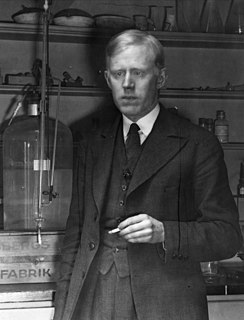
Odd Hassel was a Norwegian physical chemist and Nobel Laureate.

The Nobel Prize in Chemistry is awarded annually by the Royal Swedish Academy of Sciences to scientists in the various fields of chemistry. It is one of the five Nobel Prizes established by the will of Alfred Nobel in 1895, awarded for outstanding contributions in chemistry, physics, literature, peace, and physiology or medicine. This award is administered by the Nobel Foundation, and awarded by the Royal Swedish Academy of Sciences on proposal of the Nobel Committee for Chemistry which consists of five members elected by the Academy. The award is presented in Stockholm at an annual ceremony on 10 December, the anniversary of Nobel's death.
Bob Marley, Jamaican singer-songwriter and guitarist (b. 1945) deaths

Robert Nesta Marley was a Jamaican singer, musician, and songwriter. Considered one of the pioneers of reggae, his musical career was marked by fusing elements of reggae, ska, and rocksteady, as well as his distinctive vocal and songwriting style. Marley's contributions to music increased the visibility of Jamaican music worldwide, and made him a global figure in popular culture to this day. Over the course of his career, Marley became known as a Rastafari icon, and he infused his music with a sense of spirituality. He is also considered a global symbol of Jamaican music and culture and identity, and was controversial in his outspoken support for democratic social reforms. In 1976, Marley survived an assassination attempt in his home, which was thought to be politically motivated. He also supported legalization of marijuana, and advocated for Pan-Africanism.
Lester Flatt, American singer-songwriter and guitarist (b. 1914) deaths

Lester Raymond Flatt was an American bluegrass guitarist and mandolinist, best known for his collaboration with banjo picker Earl Scruggs in the duo Flatt and Scruggs.
Laetitia Casta, French model and actress births

Laetitia Marie Laure Casta is a French supermodel and actress.
Pablo Gabriel García, Uruguayan footballer births

Pablo Gabriel García Pérez is a Uruguayan former professional footballer who played as a defensive midfielder, currently manager of Super League Greece 2 club PAOK B.
Victor Matfield, South African rugby player, coach, and sportscaster births
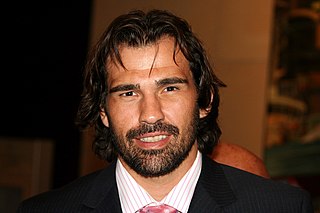
Victor Matfield is a South African former professional rugby union player. He played for and captained the South Africa national team (Springboks) as well as the Blue Bulls in the Currie Cup and the Bulls franchise in Super Rugby. He is generally considered one of the best locks to have ever played for South Africa and had a long successful partnership with Springbok and Blue Bulls teammate Bakkies Botha.
Bobby Roode, Canadian professional wrestler births

Robert Francis Roode Jr. is a Canadian professional wrestler signed to WWE, where he performs on the Raw brand. He is currently inactive due to an undisclosed injury.
Kardinal Offishall, Canadian rapper and record producer/executive births
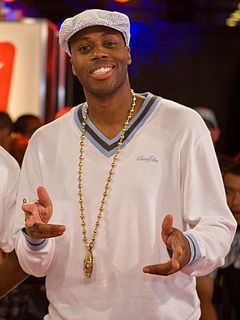
Jason Drew Harrow, better known by his stage name Kardinal Offishall, is a Canadian rapper, record producer, DJ, and record executive. Often credited as Canada's "hip hop ambassador", he is regarded as one of the country's best hip hop producers, and is best known for his distinctive reggae and dancehall-influenced style of hip hop.
Francisco Cordero, Dominican-American baseball player births
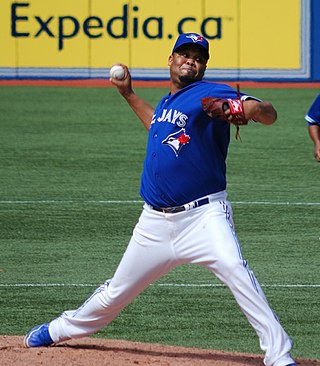
Francisco Javier Cordero is a Dominican former professional baseball pitcher. He played in Major League Baseball (MLB) for the Detroit Tigers, Texas Rangers, Milwaukee Brewers, Cincinnati Reds, Toronto Blue Jays, and Houston Astros from 1999 through 2012, often serving as the closer. On June 1, 2011, Cordero recorded his 300th career save with the Reds, becoming only the 22nd player to reach that mark. He completed his major league career with 329 saves and is a three-time MLB All-Star.
Stanley Gene, Papua New Guinean rugby league player births
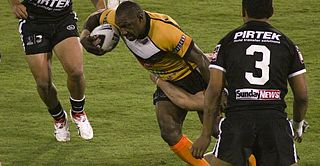
Stanley Gene is a Papua New Guinean former rugby league Kumul (#166) player and professional Assistant Coach (Defence) of the Hull Kingston Rovers. He previously coached Gateshead Thunder and the academy team at Hull Kingston Rovers and served as the Papua New Guinea Kumuls head coach in 2010. Having moved to England following an impressive showing for PNG in the 1995 Rugby League World Cup, Gene enjoyed a long career in the British game with spells at Hull Kingston Rovers, Huddersfield Giants, Bradford Bulls, Hull F.C. and Halifax.
Darren Ward, English-Welsh footballer and coach births
Darren Ward is a Welsh former international football goalkeeper and current Senior England Women’s Goalkeeping Coach with England Lionesses.
Tony Warner, English born Trinidadian international footballer and coach births
Anthony Randolph Warner is a football coach and former professional footballer who is the goalkeeping coach at Reading.
Tsuyoshi Ogata, Japanese runner births
Tsuyoshi Ogata is a Japanese long-distance athlete competing mainly in the marathon.
Tomáš Dvořák, Czech decathlete and coach births

Tomáš Dvořák, born 11 May 1972 in Gottwaldov, Czechoslovakia, is an athlete from the Czech Republic. He competed in the decathlon and heptathlon for the team Dukla Prague. He is a three-time decathlon world champion and a former world record holder, which is still the fifth best performance of all-time. This record was broken by Dvořák's compatriot Roman Šebrle in 2001. Dvořák is the only athlete to score over 8,900 points three times.
Harold Ford, Jr., American lawyer and politician births

Harold Eugene Ford Jr. is an American financial managing director, pundit, author, and former U.S. Congressman who served from 1997–2007 in the United States House of Representatives as a member of the Democratic Party from Tennessee's 9th congressional district, centered in Memphis. He is a member of the Ford political family from Memphis, and is the son of former Congressman Harold Ford Sr., who held the same seat for 22 years. In 2006, Ford made an unsuccessful bid for the U.S. Senate seat vacated by the retiring Bill Frist. He was also the last chairman of the Democratic Leadership Council (DLC).
Jason Queally, English cyclist births
Jason Paul Queally is an English track cyclist. He won a gold medal at the 2000 Olympics in Sydney.
Mitch Healey, Australian rugby league player and coach births

Mitch Healey is an Australian former professional rugby league footballer, who played for the Cronulla-Sutherland Sharks.
Simon Vroemen, Dutch runner births

Simon Frans Vroemen is a Dutch runner, specialising in the steeplechase.
Alberto García Aspe, Mexican footballer and manager births
Alberto García Aspe Mena is a Mexican former professional footballer who played as a midfielder. He is one of the all-time appearance leaders for the Mexico national team. He participated in 109 matches, scoring a total 21 goals. In addition, he has played in three FIFA World Cups.
James E. Brewton, American painter (b. 1930) deaths

James Edward Brewton was an American painter and printmaker who synthesized expressionism, graffiti and Pataphysics.
Bobby Witt, American baseball player births

Robert Andrew Witt Sr. is a former professional baseball pitcher, who played all or parts of 16 seasons in Major League Baseball (MLB) for the Texas Rangers, Oakland Athletics, Florida Marlins, St. Louis Cardinals, Tampa Bay Devil Rays, Cleveland Indians, and Arizona Diamondbacks.
Floyd Youmans, American baseball player, coach, and manager births
Floyd Everett Youmans is a former professional baseball pitcher. He pitched all or part of five seasons in Major League Baseball from 1985–89. He is one of the players dealt by the New York Mets to the Montreal Expos for Hall of Fame catcher Gary Carter.
Herbert Spencer Gasser, American physiologist and academic, Nobel Prize laureate (b. 1888): 169 deaths

Herbert Spencer Gasser was an American physiologist, and recipient of the Nobel Prize for Physiology or Medicine in 1944 for his work with action potentials in nerve fibers while on the faculty of Washington University in St. Louis, awarded jointly with Joseph Erlanger.

The Nobel Prize in Physiology or Medicine is awarded yearly by the Nobel Assembly at the Karolinska Institute for outstanding discoveries in physiology or medicine. The Nobel Prize is not a single prize, but five separate prizes that, according to Alfred Nobel's 1895 will, are awarded "to those who, during the preceding year, have conferred the greatest benefit to humankind". Nobel Prizes are awarded in the fields of Physics, Chemistry, Physiology or Medicine, Literature, and Peace.
Steve Bono, American football player births

Steven Christopher Bono is a former American football quarterback in the National Football League.
John D. Rockefeller Jr., American businessman and philanthropist (b. 1874) deaths

John Davison Rockefeller Jr. was an American financier and philanthropist, and the only son of Standard Oil co-founder John D. Rockefeller.
Mike Nesbitt, Northern Irish journalist and politician births
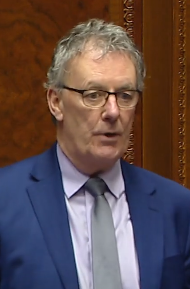
Michael Nesbitt, MLA is a British politician and former broadcaster who was the Leader of the Ulster Unionist Party (UUP) from 2012 to 2017 and has been a Member of the Northern Ireland Assembly (MLA) for Strangford since 2011.
John DeStefano, Jr., American politician, 49th Mayor of New Haven births

John DeStefano Jr. is an American politician who served as the 49th mayor of New Haven, Connecticut, from 1994 until 2014. He was the Democratic nominee in 2006 for Governor of Connecticut, unsuccessfully challenging incumbent Republican Governor M. Jodi Rell. He was also the named defendant in the landmark 2009 U.S. Supreme Court case of Ricci v. DeStefano. John DeStefano is the son of a New Haven police officer. John and his wife Kathy DeStefano met at the University of Connecticut as undergraduates, where he also earned a Masters in Public Administration. Kathy DeStefano is a first grade teacher in West Haven, Connecticut, and they are the parents of two adult sons.
This is a list of the Mayors of New Haven, Connecticut.
Gilbert Jessop, English cricketer (b. 1874) deaths

Gilbert Laird Jessop was an English cricket player, often reckoned to have been the fastest run-scorer cricket has ever known. He was Wisden Cricketer of the Year for 1898.
John Gregory, English footballer and manager births

John Charles Gregory is an English former footballer. He has previously managed: Portsmouth, Plymouth Argyle, Wycombe Wanderers, Aston Villa, Derby County, Queens Park Rangers, Maccabi Ahi Nazareth, F.C. Ashdod, FC Kairat, Crawley Town and Chennaiyin. As a player, he was a versatile midfielder who started his career at Northampton Town and later played for Brighton & Hove Albion, QPR, Derby and Aston Villa. He won six caps for England.
Ed Stelmach, Canadian farmer and politician, 13th Premier of Alberta births
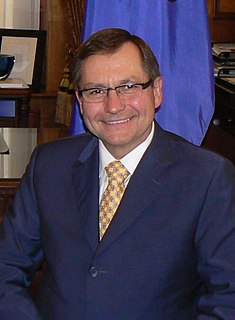
Edward Michael Stelmach is a Canadian politician and served as the 13th premier of Alberta, from 2006 to 2011. The grandson of Ukrainian immigrants, Stelmach was born and raised on a farm near Lamont and fluently speaks the distinctive Canadian dialect of Ukrainian. He spent his entire pre-political adult life as a farmer, except for some time spent studying at the University of Alberta. His first foray into politics was a 1986 municipal election, when he was elected to Lamont County council. A year into his term, he was appointed reeve. He continued in this position until his entry into provincial politics.

The premier of Alberta is the first minister for the Canadian province of Alberta, and the province's head of government. The current premier is Danielle Smith, leader of the United Conservative Party, who was sworn in on October 11, 2022.
Jeremy Paxman, English journalist and author births

Jeremy Dickson Paxman is an English broadcaster, journalist, author, and television presenter. Born in Leeds, Paxman was educated at Malvern College and St Catharine's College, Cambridge, where he edited the undergraduate newspaper Varsity. At Cambridge, he was a member of a Labour Party club and described himself as a socialist, although in later life described himself as a one-nation conservative. He joined the BBC in 1972, initially at BBC Radio Brighton, although he relocated to London in 1977. In coming years, he worked on Tonight and Panorama before becoming a newsreader for the BBC Six O'Clock News and later a presenter on Breakfast Time.
Sadashiv Amrapurkar, Indian actor (d. 2014) births
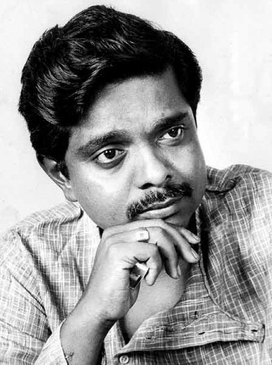
Sadashiv Dattaray Amrapurkar was an Indian actor, best known for his performances in Marathi and Hindi films from 1983 to 1999. He acted in more than 300 movies in Hindi, Marathi, and other regional languages. He also played first class cricket in Ranji trophy.
Jack Cantoni, French rugby player (d. 2013) births
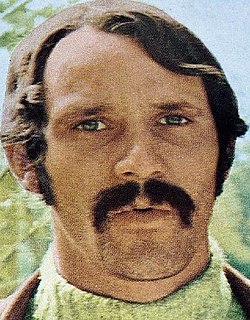
Jack Cantoni was a French international rugby union player.
Nirj Deva, Sri Lankan-English politician births

Thakur Artha Niranjan Joseph De Silva Deva Aditya,, known as Nirj Deva, is a British politician. A member of the Conservative Party, he served as a Member of the European Parliament for South East England from 1999 to 2019. He was a Member of Parliament (MP) in the British House of Commons from 1992 to 1997, for the seat of Brentford and Isleworth.
Seán McCaughey Irish Republican, Hunger Striker deaths
Seán McCaughey was an Irish Republican Army leader in the 1930s and 1940s and hunger striker.
John Benaud, Australian cricketer births
John Benaud is a former Australian cricketer.
Nancy Greene, Canadian skier and politician births
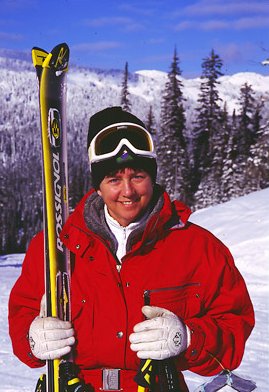
Nancy Catherine Greene Raine is a former Canadian Senator for British Columbia and an Olympian alpine skier voted as Canada's Female Athlete of the 20th Century. She was born in Ottawa, Ontario, Canada. Greene Raine won the giant slalom in Grenoble, France, in the 1968 Winter Olympics.
Eric Burdon, English musician births

Eric Victor Burdon is an English singer. He was previously the vocalist of rhythm and blues and rock band the Animals and funk band War. He is regarded as one of the British Invasion's most distinctive singers with his deep, powerful blues-rock voice. He is also known for his aggressive stage performances.
Ian Redpath, Australian cricketer and coach births
Ian Ritchie Redpath is a former Australian international cricketer who played in 66 Test matches and five One Day Internationals between 1964 and 1976. Greg Chappell said he was one of only two players he knew who would kill to get into the Australian Test team, the other being Rod Marsh.
Narendra Patel, Baron Patel, Tanzanian-English obstetrician, academic, and politician births

Narendra Babubhai Patel, Baron Patel, is a Tanzanian-British obstetrician and cross bench peer, and a former Chancellor of the University of Dundee.
George Lyon, Canadian golfer and cricketer (b. 1858) deaths

George Seymour Lyon was a Canadian golfer, an Olympic gold medalist in golf, an eight-time Canadian Amateur Championship winner, and a member of Canada's Sports Hall of Fame. He worked in the insurance industry.
Ildikó Újlaky-Rejtő, Hungarian Olympic and world champion foil fencer births

Ildikó Rejtő is a retired Hungarian two-time Olympic and five-time World Champion foil fencer.
Francisco Umbral, Spanish journalist and author (d. 2007) births

Francisco Alejandro Pérez Martínez, better known as Francisco Umbral, was a Spanish journalist, novelist, biographer and essayist.
Jim Jeffords, American captain, lawyer, and politician (d. 2014) births

James Merrill Jeffords was an American lawyer and politician who served as a U.S. senator from Vermont. Sworn into the Senate in 1989, he served as a Republican until 2001, when he left the party to become an independent and began caucusing with the Democrats. Jeffords retired from the Senate in 2007. Prior to serving in the Senate, he served as the U.S. representative for Vermont's at-large congressional district from 1975 to 1989.
Jack Twyman, American basketball player (d. 2012) births

John Kennedy Twyman was an American professional basketball player and sports broadcaster. Twyman is a namesake of the NBA's Twyman–Stokes Teammate of the Year Award. Twyman was inducted into the Naismith Basketball Hall of Fame in 1983.
Louis Farrakhan, American religious leader births

Louis Farrakhan is an American religious leader, black supremacist, anti-white conspiracy theorist, and former singer who heads the Nation of Islam (NOI). Prior to joining the NOI, he was a calypso singer who used the stage name Calypso Gene. Earlier in his career, he served as the minister of mosques in Boston and Harlem and was appointed National Representative of the Nation of Islam by former NOI leader Elijah Muhammad. He adopted the name Louis X, before being named Louis Farrakhan.
Valentino Garavani, Italian fashion designer births

Valentino Clemente Ludovico Garavani, known mononymously as Valentino, is an Italian fashion designer, the founder of the Valentino brand and company. His main lines include Valentino, Valentino Garavani, Valentino Roma, and R.E.D. Valentino.
Edsger W. Dijkstra, Dutch computer scientist and academic (d. 2002) births
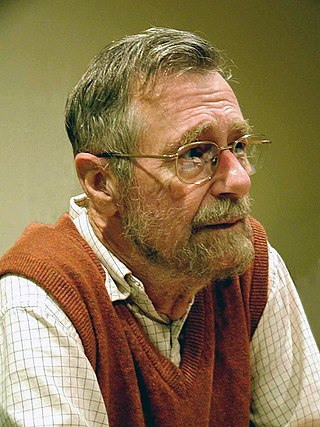
Edsger Wybe Dijkstra was a Dutch computer scientist, programmer, software engineer, systems scientist, and science essayist. He received the 1972 Turing Award for fundamental contributions to developing programming languages, and was the Schlumberger Centennial Chair of Computer Sciences at The University of Texas at Austin from 1984 until 2000.
Stanley Elkin, American novelist, short story writer, and essayist (d. 1995) births

Stanley Lawrence Elkin was an American novelist, short story writer, and essayist. His extravagant, satirical fiction revolves around American consumerism, popular culture, and male–female relationships.
Jozef Murgaš, Slovak-American priest, architect, botanist, and painter (b. 1864) deaths

Jozef Murgaš was a Slovak inventor, architect, botanist, painter and Roman Catholic priest. He contributed to wireless telegraphy and helped in the development of mobile communications and the wireless transmission of information and the human voice.
Bernard Fox, British actor (d. 2016) births

Bernard Lawson, better known as Bernard Fox, was a Welsh actor. He is remembered for his roles as Dr. Bombay in the comedy fantasy series Bewitched (1964–1972), Colonel Crittendon in the comedy series Hogan's Heroes (1965–1971), Malcolm Merriweather in The Andy Griffith Show (1963–1965), Colonel Redford in Barnaby Jones (1975), Max in Herbie Goes to Monte Carlo (1977), and Archibald Gracie IV in the film Titanic (1997).
Gene Savoy, American explorer, author, and scholar (d. 2007) births

Douglas Eugene "Gene" Savoy was an American explorer, author, religious leader, and theologian. He served as Head Bishop of the International Community of Christ, Church of the Second Advent from 1971 until his death. Rising to prominence as one of the premier explorers of Peru in the 1960s, he is best known for his claims to have discovered more than 40 lost cities in Peru and is credited with bringing to light a number of Peru’s most important archeological sites, including Vilcabamba, the last refuge of the Incas during the Spanish conquest, and Gran Pajaten, which he named but did not discover.
Juan Gris, Spanish painter and sculptor (b. 1887) deaths

José Victoriano González-Pérez , better known as Juan Gris, was a Spanish painter born in Madrid who lived and worked in France for most of his active period. Closely connected to the innovative artistic genre Cubism, his works are among the movement's most distinctive.
Edward J. King, American football player and politician, 66th Governor of Massachusetts (d. 2006) births

Edward Joseph King was an American politician who served as the 66th Governor of Massachusetts from 1979 to 1983. A member of the Democratic Party until 1985, he then became a member of the Republican Party. Elected in the 1978 Massachusetts gubernatorial election, he lost the Democratic primary of the 1982 election to his predecessor Michael Dukakis.

The governor of the Commonwealth of Massachusetts is the chief executive officer of the government of Massachusetts. The governor is the head of the state cabinet and the commander-in-chief of the commonwealth's military forces.
Antony Hewish, English astronomer and academic, Nobel Prize laureate (d. 2021) births

Antony Hewish was a British radio astronomer who won the Nobel Prize for Physics in 1974 for his role in the discovery of pulsars. He was also awarded the Eddington Medal of the Royal Astronomical Society in 1969.

The Nobel Prize in Physics is a yearly award given by the Royal Swedish Academy of Sciences for those who have made the most outstanding contributions for humankind in the field of physics. It is one of the five Nobel Prizes established by the will of Alfred Nobel in 1895 and awarded since 1901, the others being the Nobel Prize in Chemistry, Nobel Prize in Literature, Nobel Peace Prize, and Nobel Prize in Physiology or Medicine. Physics is traditionally the first award presented in the Nobel Prize ceremony.
Robin Barbour, Scottish minister and author (d. 2014) births
Robert Alexander Stewart "Robin" Barbour was a Church of Scotland minister and an author.
Hildegard Hamm-Brücher, German politician (d. 2016) births
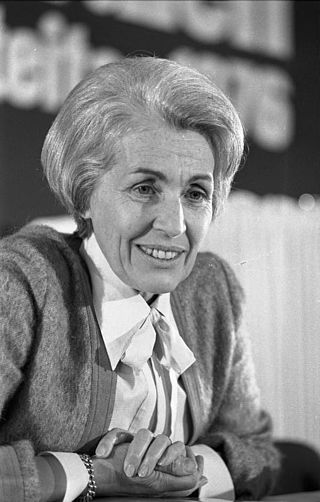
Hildegard Hamm-Brücher was a liberal politician in Germany. She held federal state secretary positions from 1969 to 1972 and from 1977 to 1982. She was the Free Democratic Party's candidate in the first two rounds of the federal presidency elections in 1994.
James Colosimo, Italian-American mob boss (b. 1878) deaths

Vincenzo Colosimo, known as James "Big Jim" Colosimo or as "Diamond Jim", was an Italian-American Mafia crime boss who emigrated from Calabria, Italy, in 1895 and built a criminal empire in Chicago based on prostitution, gambling and racketeering. He gained power through petty crime and by heading a chain of brothels. From about 1902 until his death in 1920, he led a gang that became known after his death as the Chicago Outfit. Colosimo was assassinated on May 11, 1920, and no one was ever charged with his murder. Johnny Torrio, an enforcer whom Colosimo imported in 1909 from New York, seized control of Colosimo's businesses after his death. Al Capone, a close associate of Torrio, has been accused of involvement in Colosimo's murder, but was not yet in Chicago at the time.
William Dean Howells, American novelist, literary critic, and playwright (b. 1837) deaths
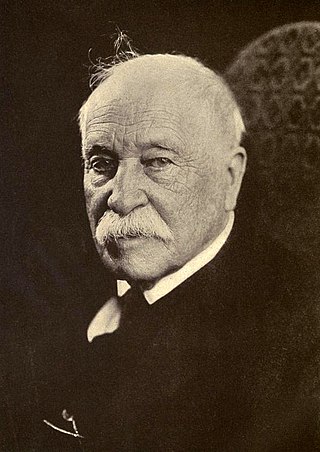
William Dean Howells was an American realist novelist, literary critic, and playwright, nicknamed "The Dean of American Letters". He was particularly known for his tenure as editor of The Atlantic Monthly, as well as for his own prolific writings, including the Christmas story "Christmas Every Day" and the novels The Rise of Silas Lapham and A Traveler from Altruria.
Richard Feynman, American physicist and engineer, Nobel Prize laureate (d. 1988) births
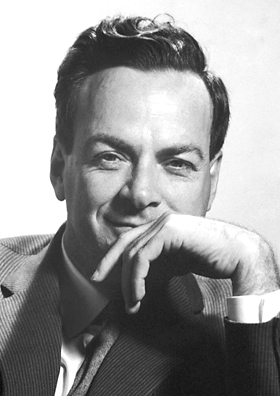
Richard Phillips Feynman was an American theoretical physicist, known for his work in the path integral formulation of quantum mechanics, the theory of quantum electrodynamics, the physics of the superfluidity of supercooled liquid helium, as well as his work in particle physics for which he proposed the parton model. For contributions to the development of quantum electrodynamics, Feynman received the Nobel Prize in Physics in 1965 jointly with Julian Schwinger and Shin'ichirō Tomonaga.

The Nobel Prize in Physics is a yearly award given by the Royal Swedish Academy of Sciences for those who have made the most outstanding contributions for humankind in the field of physics. It is one of the five Nobel Prizes established by the will of Alfred Nobel in 1895 and awarded since 1901, the others being the Nobel Prize in Chemistry, Nobel Prize in Literature, Nobel Peace Prize, and Nobel Prize in Physiology or Medicine. Physics is traditionally the first award presented in the Nobel Prize ceremony.
George Elmslie, Australian politician, 25th Premier of Victoria (b. 1861) deaths

George Alexander Elmslie was an Australian politician who served as the 25th and shortest serving Premier of Victoria, and the first Labor Premier.

The premier of Victoria is the head of government in the Australian state of Victoria. The premier is appointed by the governor of Victoria, and is the leader of the political party able to secure a majority in the Victorian Legislative Assembly.
Camilo José Cela, Spanish author and politician, Nobel Prize laureate (d. 2002) births

Camilo José Cela y Trulock, 1st Marquess of Iria Flavia was a Spanish novelist, poet, story writer and essayist associated with the Generation of '36 movement.

The Nobel Prize in Literature is a Swedish literature prize that is awarded annually, since 1901, to an author from any country who has, in the words of the will of Swedish industrialist Alfred Nobel, "in the field of literature, produced the most outstanding work in an idealistic direction". Though individual works are sometimes cited as being particularly noteworthy, the award is based on an author's body of work as a whole. The Swedish Academy decides who, if anyone, will receive the prize. The academy announces the name of the laureate in early October. It is one of the five Nobel Prizes established by the will of Alfred Nobel in 1895. Literature is traditionally the final award presented at the Nobel Prize ceremony. On some occasions the award has been postponed to the following year, most recently in 2018 as of May 2022.
Karl Schwarzschild, German astronomer and physicist (b. 1873): xix deaths
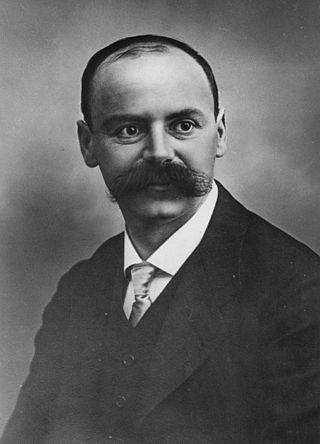
Karl Schwarzschild was a German physicist and astronomer.
Saadat Hasan Manto, Indian-Pakistani author and screenwriter (d. 1955) births

Saadat Hasan Manto was a Pakistani writer, playwright and author born in Ludhiana, who was active in British India and later, after the 1947 partition of India, in Pakistan.
Mitchell Sharp, Canadian economist and politician, 23rd Canadian Minister of Finance (d. 2004) births

Mitchell William Sharp was a Canadian politician and a Companion of the Order of Canada, most noted for his service as a Liberal Cabinet minister. He did, however, serve in both private and public sectors during his long career.

The minister of finance is the minister of the Crown in the Canadian Cabinet who is responsible for overseeing the Department of Finance and presenting the federal government's budget each year. It is one of the most important positions in the Cabinet.
Phil Silvers, American actor and comedian (d. 1985) births

Phil Silvers was an American entertainer and comedic actor, known as "The King of Chutzpah". His career as a professional entertainer spanned nearly sixty years. Silvers achieved major popularity when he starred in The Phil Silvers Show, a 1950s sitcom set on a U.S. Army post in which he played Master Sergeant Ernest (Ernie) Bilko. He also starred in the films It's a Mad, Mad, Mad, Mad World (1963) and A Funny Thing Happened on the Way to the Forum (1966). He was a winner of two Primetime Emmy Awards for his work on The Phil Silvers Show and two Tony Awards for his performances in Top Banana and A Funny Thing Happened on the Way to the Forum. He also wrote the original lyrics to the jazz standard Nancy.
Charles Kingston, Australian politician, 20th Premier of South Australia (b. 1850) deaths

Charles Cameron Kingston was an Australian politician. From 1893 to 1899 he was a radical liberal Premier of South Australia, occupying this office with the support of Labor, which in the House of Assembly was led by John McPherson from 1893, and by Lee Batchelor upon McPherson's death in 1897.

The premier of South Australia is the head of government in the state of South Australia, Australia. The Government of South Australia follows the Westminster system, with a Parliament of South Australia acting as the legislature. The premier is appointed by the governor of South Australia, and by modern convention holds office by virtue of his or her ability to command the support of a majority of members of the lower house of Parliament, the House of Assembly.
Rip Sewell, American baseball player and coach (d. 1989) births
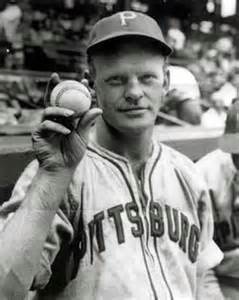
Truett Banks "Rip" Sewell was a right-handed starting pitcher in Major League Baseball who played 13 years in the major leagues with the Detroit Tigers (1932) and Pittsburgh Pirates (1938–1949). Sewell was selected four times to the National League All-Star team (1943–1946) and is credited with inventing the "Eephus pitch."
Lise de Baissac, Mauritian-born SOE agent, war hero (d. 2004) births

Lise Marie Jeanette de Baissac MBE CdeG, code names Odile and Marguerite, was a Mauritian agent in the United Kingdom's clandestine Special Operations Executive (SOE) organization in France during World War II. The purpose of SOE was to conduct espionage, sabotage, and reconnaissance in countries occupied by the Axis powers, especially Nazi Germany. SOE agents allied themselves with resistance groups and supplied them with weapons and equipment parachuted in from England.
The Special Operations Executive (SOE) was a secret British World War II organisation. It was officially formed on 22 July 1940 under Minister of Economic Warfare Hugh Dalton, from the amalgamation of three existing secret organisations. Its purpose was to conduct espionage, sabotage and reconnaissance in occupied Europe against the Axis powers, and to aid local resistance movements.
Catherine Bauer Wurster, American architect and public housing advocate (d. 1964) births
Catherine Krouse Bauer Wurster was an American public housing advocate and educator of city planners and urban planners. A leading member of the "housers," a group of planners who advocated affordable housing for low-income families, she dramatically changed social housing practice and law in the United States. Wurster's influential book Modern Housing was published by Houghton Mifflin Company in 1934 and is regarded as a classic in the field.
Salvador Dalí, Spanish artist (d. 1989) births

Salvador Domingo Felipe Jacinto Dalí i Domènech, Marquess of Dalí of Púbol was a Spanish surrealist artist renowned for his technical skill, precise draftsmanship, and the striking and bizarre images in his work.
Charlie Gehringer, American baseball player and manager (d. 1993) births

Charles Leonard Gehringer, nicknamed "the Mechanical Man", was an American professional baseball second baseman, coach, general manager, and team vice president, who played in Major League Baseball (MLB) for the Detroit Tigers for 19 seasons (1924–1942). He was elected to the Baseball Hall of Fame in 1949.
Edna Ernestine Kramer, American mathematician (d. 1984) births
Edna Ernestine Kramer Lassar, born Edna Ernestine Kramer, was an American mathematician and author of mathematics books.
Rose Ausländer, Ukrainian-English poet and author (d. 1988) births
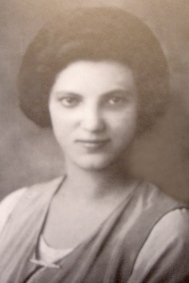
Rose Ausländer was a Jewish poet writing in German and English. Born in Czernowitz in the Bukovina, she lived through its tumultuous history of belonging to the Austro-Hungarian Empire, Kingdom of Romania, and eventually the Soviet Union. Rose Ausländer spent her life in several countries: Austria-Hungary, Romania, the United States, and Germany.
Gladys Rockmore Davis, American painter (d. 1967) births

Gladys Rockmore Davis was an American artist who worked in both commercial and fine arts. She gave up a career in advertising art to work in creative painting. Her work in pastels ranks with her oils, and her chief subjects are children, nudes, and still lifes. She also painted ballet dancers, vignettes of liberated Paris, and scenes of Spain. An art critic once called Gladys Rockmore Davis "the ten-year wonder of United States art". Her husband Floyd Davis and her son Noel Rockmore were well-known artists as well.
Robert E. Gross, American businessman (d. 1961) births
Robert Ellsworth Gross was an American businessman involved in the field of aviation. His first venture, the Viking Flying Boat Company, failed with the loss of the aircraft market brought on by the Great Depression.
Josip Štolcer-Slavenski, Croatian composer and academic (d. 1955) births

Josip Štolcer-Slavenski was a Croatian composer and professor at the Music Academy in Belgrade.
Jacques Brugnon, French tennis player (d. 1978) births

Jacques Marie Stanislas Jean Brugnon, nicknamed "Toto", was a French tennis player, one of the famous "Four Musketeers" from France who dominated tennis in the late 1920s and early 1930s. He was born in and died in Paris.
Jiddu Krishnamurti, Indian philosopher and speaker (d. 1986) births

Jiddu Krishnamurti was a philosopher, speaker and writer. In his early life, he was groomed to be the new World Teacher, an advanced spiritual position in the theosophical tradition, but later rejected this mantle and withdrew from the organization behind it. His interests included psychological revolution, the nature of mind, meditation, holistic inquiry, human relationships, and bringing about radical change in society. He stressed the need for a revolution in the psyche of every human being and emphasised that such revolution cannot be brought about by any external entity, be it religious, political, or social.
William Grant Still, American composer and conductor (d. 1978) births

William Grant Still Jr. was an American composer of nearly two hundred works, including five symphonies, four ballets, nine operas, over thirty choral works, plus art songs, chamber music and works for solo instruments. Born in Mississippi, he grew up in Little Rock, Arkansas, attended Wilberforce University and Oberlin Conservatory of Music, and was a student of George Whitefield Chadwick and later, Edgard Varèse. Because of his close association and collaboration with prominent African-American literary and cultural figures, Still is considered to have been part of the Harlem Renaissance.
Martha Graham, American dancer and choreographer (d. 1991) births

Martha Graham was an American modern dancer and choreographer. Her style, the Graham technique, reshaped American dance and is still taught worldwide.
Willie Applegarth, English-American sprinter (d. 1958) births
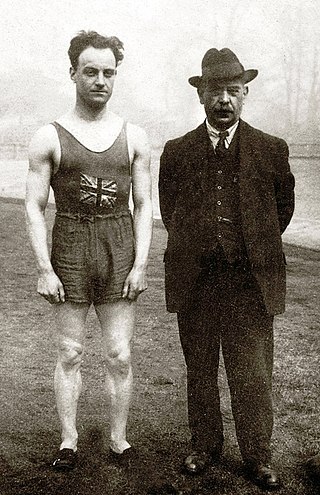
William Reuben Applegarth was a British track and field athlete, and winner of a gold medal in the 4 × 100 metres relay at the 1912 Summer Olympics.
Helge Løvland, Norwegian decathlete (d. 1984) births

Helge Andreas Løvland was a Norwegian track and field athlete. He won the gold medal in the decathlon at the 1920 Olympics. Løvland was awarded the Egebergs Ærespris in 1919. Representing the club IF Ørnulf, he died in Oslo in 1984.
Paul Nash, British painter (d. 1946) births

Paul Nash was a British surrealist painter and war artist, as well as a photographer, writer and designer of applied art. Nash was among the most important landscape artists of the first half of the twentieth century. He played a key role in the development of Modernism in English art.
John Cadbury, English businessman and philanthropist, founded the Cadbury Company (b. 1801) deaths

John Cadbury was a Quaker and English proprietor, tea and coffee trader and founder of Cadbury, the chocolate business based in Birmingham, England.

Cadbury, formerly Cadbury's and Cadbury Schweppes, is a British multinational confectionery company fully owned by Mondelez International since 2010. It is the second largest confectionery brand in the world after Mars. Cadbury is internationally headquartered in Buckinghamshire, and operates in more than 50 countries worldwide. It is known for its Dairy Milk chocolate, the Creme Egg and Roses selection box, and many other confectionery products. One of the best-known British brands, in 2013 The Daily Telegraph named Cadbury among Britain's most successful exports.
Irving Berlin, Belarusian-American pianist and composer (d. 1989) births

Irving Berlin was a Russian-American composer, songwriter and lyricist. His music forms a large part of the Great American Songbook.
Willis Augustus Lee, American admiral (d. 1945) births

Willis Augustus "Ching" Lee Jr. was a vice admiral of the United States Navy during World War II. Lee commanded the American ships during the second night of the Naval Battle of Guadalcanal and turned back a Japanese invasion force headed for the island. The victory ended Japanese attempts to reinforce their troops on Guadalcanal, and thus marked a turning point in both the Guadalcanal Campaign and the Pacific War.
Frederick Innes, Scottish-Australian politician, 9th Premier of Tasmania (b. 1816) deaths
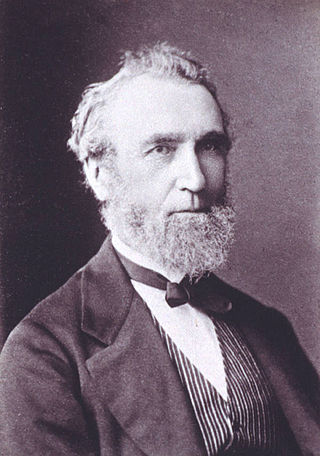
Frederick Maitland Innes was Premier of Tasmania from 4 November 1872 to 4 August 1873.

The premier of Tasmania is the head of the executive government in the Australian state of Tasmania. By convention, the leader of the party or political grouping which has majority support in the House of Assembly is invited by the governor of Tasmania to be premier and principal adviser.
Al Cabrera, Spanish-Cuban baseball player and manager (d. 1964) births

Alfredo A. Cabrera was a professional baseball shortstop who played many years in the Cuban League. His nickname was Pájaro, which is Spanish for "Bird."
Jan van Gilse, Dutch composer and conductor (d. 1944) births

Jan Pieter Hendrik van Gilse was a Dutch composer and conductor. Among his works are five symphonies and the Dutch-language opera Thijl.
Theodore von Kármán, Hungarian-American mathematician, physicist, and engineer (d. 1963) births

Theodore von Kármán was a Hungarian-American mathematician, aerospace engineer, and physicist who was active primarily in the fields of aeronautics and astronautics. He was responsible for many key advances in aerodynamics, notably on supersonic and hypersonic airflow characterization. He is regarded as an outstanding aerodynamic theoretician of the 20th century.
Harriet Quimby, American pilot and screenwriter (d. 1912) births
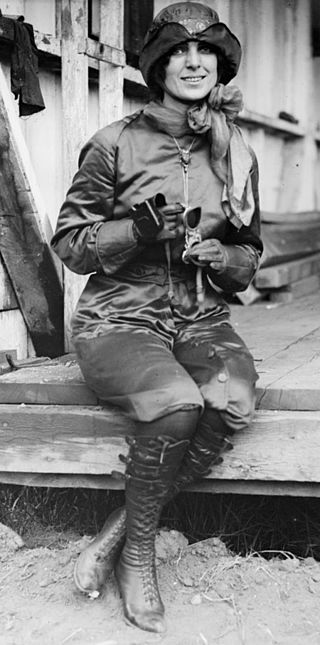
Harriet Quimby was an American pioneering aviator, journalist, and film screenwriter.
Frank Schlesinger, American astronomer and author (d. 1943) births

Frank Schlesinger was an American astronomer. His work concentrated on using photographic plates rather than direct visual studies for astronomical research.
Archibald Warden, English tennis player (d. 1943) births
Archibald Adam Warden was a British tennis player who competed in the 1900 Summer Olympics.
Jack Blackham, Australian cricketer (d. 1932) births

John McCarthy Blackham was a Test cricketer who played for Victoria and Australia.
Charles W. Fairbanks, American journalist and politician, 26th United States Vice President (d. 1918) births
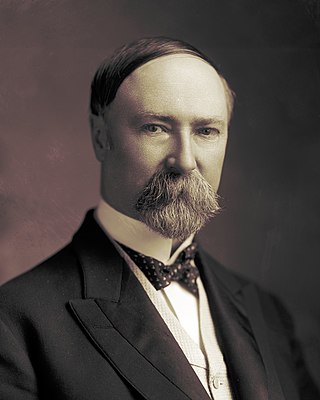
Charles Warren Fairbanks was an American politician who served as a senator from Indiana from 1897 to 1905 and the 26th vice president of the United States from 1905 to 1909. He was also the Republican vice presidential nominee in the 1916 presidential election. Had the Republican ticket been elected, Fairbanks would have become the third vice president to multiple presidents, after George Clinton and John C. Calhoun.

The vice president of the United States (VPOTUS) is the second-highest officer in the executive branch of the U.S. federal government, after the president of the United States, and ranks first in the presidential line of succession. The vice president is also an officer in the legislative branch, as the president of the Senate. In this capacity, the vice president is empowered to preside over Senate deliberations at any time, but may not vote except to cast a tie-breaking vote. The vice president is indirectly elected together with the president to a four-year term of office by the people of the United States through the Electoral College.
Juliette Récamier, French businesswoman (b. 1777) deaths

Jeanne Françoise Julie Adélaïde Récamier, known as Juliette, was a French socialite whose salon drew people from the leading literary and political circles of early 19th-century Paris. As an icon of neoclassicism, Récamier cultivated a public persona as a great beauty, and her fame quickly spread across Europe. She befriended many intellectuals, sat for the finest artists of the age, and spurned an offer of marriage from Prince Augustus of Prussia.
Tom Cribb, English boxer (b. 1781) deaths

Tom Cribb was a world champion English bare-knuckle boxer of the 19th century.
Spencer Perceval, English lawyer and politician, Prime Minister of the United Kingdom (b. 1762) deaths

Spencer Perceval was a British statesman and barrister who served as Prime Minister of the United Kingdom from October 1809 until his assassination in May 1812. Perceval is the only British prime minister to have been assassinated, and the only solicitor-general or attorney-general to have become prime minister.

The prime minister of the United Kingdom is the head of government of the United Kingdom. The prime minister advises the sovereign on the exercise of much of the royal prerogative, chairs the Cabinet and selects its ministers. As modern prime ministers hold office by virtue of their ability to command the confidence of the House of Commons, they sit as members of Parliament.
Jean-Jacques Challet-Venel, Swiss politician (d. 1893) births

Jean-Jacques Challet-Venel was a Swiss politician and member of the Swiss Federal Council (1864–1872).
José Mariano Salas, Mexican general and politician (d. 1867) births

José Mariano de Salas was a Mexican soldier and politician who served twice as interim president of Mexico, once in 1846, during the Mexican American War, and once in 1859 during the War of Reform.
John Hart, American lawyer and politician (b. 1711) deaths

John Hart was an American Founding Father, farmer, and politician in colonial New Jersey. As a delegate to the Continental Congress, Hart signed the Declaration of Independence. He died several years before the end of the Revolutionary War while still active in patriotic efforts.
William Pitt, 1st Earl of Chatham, English soldier and politician, Prime Minister of the United Kingdom (b. 1708) deaths
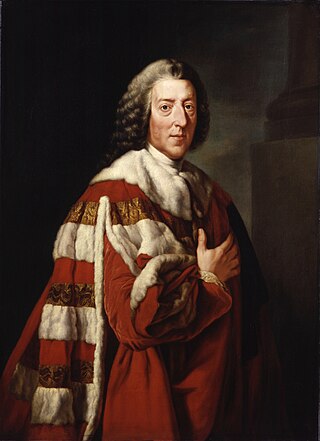
William Pitt, 1st Earl of Chatham, was a British statesman of the Whig group who served as Prime Minister of Great Britain from 1766 to 1768. Historians call him Chatham or William Pitt the Elder to distinguish him from his son William Pitt the Younger, who was also a prime minister. Pitt was also known as the Great Commoner, because of his long-standing refusal to accept a title until 1766.

The prime minister of the United Kingdom is the head of government of the United Kingdom. The prime minister advises the sovereign on the exercise of much of the royal prerogative, chairs the Cabinet and selects its ministers. As modern prime ministers hold office by virtue of their ability to command the confidence of the House of Commons, they sit as members of Parliament.
Johann Friedrich Blumenbach, German physician, physiologist, and anthropologist (d. 1840): 94 births

Johann Friedrich Blumenbach was a German physician, naturalist, physiologist, and anthropologist. He is considered to be a main founder of zoology and anthropology as comparative, scientific disciplines. He was also important as a race theorist.
Johann Gottfried Bernhard Bach, German organist (d. 1739) births
Johann Gottfried Bernhard Bach was a German musician. It is not known whether he composed, and his career as an organist is not in itself notable, but his life throws light on his famous father, the composer Johann Sebastian Bach. Johann Gottfried was the fourth child of Johann Sebastian Bach and Maria Barbara Bach to reach adulthood.
Matteo Ricci, Italian priest and mathematician (b. 1552) deaths

Matteo Ricci, SJ, was an Italian Jesuit priest and one of the founding figures of the Jesuit China missions. He created the Kunyu Wanguo Quantu, a 1602 map of the world written in Chinese characters. He is considered a Servant of God by the Catholic Church.
Niwa Nagashige, Japanese daimyō (d. 1637) births

Niwa Nagashige was a Japanese daimyō who served the Oda clan. Nagashige was the eldest son of Niwa Nagahide and married the 5th daughter of Oda Nobunaga. He took part in his first campaign in 1583, assisting his father in the Battle of Shizugatake against Shibata Katsuie. In 1584, the Battle of Nagakute, at the age of thirteen, Nagashige led a troop of the Niwa clan in place of his father, who was ill.
Leo VI the Wise, Byzantine Emperor, the second ruler of the Macedonian dynasty (b.866). deaths

Leo VI, called the Wise, was Byzantine Emperor from 886 to 912. The second ruler of the Macedonian dynasty, he was very well read, leading to his epithet. During his reign, the renaissance of letters, begun by his predecessor Basil I, continued; but the Empire also saw several military defeats in the Balkans against Bulgaria and against the Arabs in Sicily and the Aegean. His reign also witnessed the formal discontinuation of several ancient Roman institutions, such as the separate office of Roman consul.

This is a list of the Byzantine emperors from the foundation of Constantinople in 330 AD, which marks the conventional start of the Eastern Roman Empire, to its fall to the Ottoman Empire in 1453 AD. Only the emperors who were recognized as legitimate rulers and exercised sovereign authority are included, to the exclusion of junior co-emperors (symbasileis) who never attained the status of sole or senior ruler, as well as of the various usurpers or rebels who claimed the imperial title.

The Macedonian dynasty ruled the Byzantine Empire from 867 to 1056, following the Amorian dynasty. During this period, the Byzantine state reached its greatest extent since the Muslim conquests, and the Macedonian Renaissance in letters and arts began. The dynasty was named after its founder, Basil I the Macedonian who came from the theme of Macedonia, which, at the time, was part of Thrace.
Christian feast day: Anthimus of Rome

Saint Anthimus of Rome, or Sant'Antimo in Italian, is a Christian saint. His life is largely composed of legend. He is said to have been born in Bithynia. A Christian priest, he was imprisoned for his beliefs at the time of the Emperors Diocletian and Maximian. His feast day is May 11.
Christian feast day: Gangulphus of Burgundy
Saint Gangulphus of Burgundy is venerated as a martyr by the Catholic Church. Gangulphus was a Burgundian courtier whose historical existence can only be attested by a single document: a deed from the court of Pepin the Short dated 762. It attests that he was a great landowner, whose family dominated the region and exercised a lot of power.
Christian feast day: Majolus of Cluny
Majolus of Cluny was the fourth abbot of Cluny. Majolus was very active in reforming individual communities of monks and canons; first, as a personal commission, requested and authorized by the Emperor or other nobility. Later, he found it more effective to affiliate some of the foundations to the motherhouse at Cluny to lessen the likelihood of later relapse.
Christian feast day: Mamertus, the first of the Ice Saints

Mamertus was the bishop of Vienne in Gaul, venerated as a saint. His primary contribution to ecclesiastical practice was the introduction of litanies prior to Ascension Day as an intercession against earthquakes and other disasters, leading to "Rogation Days." His feast day is the first of the Ice Saints.

The Ice Saints are St. Mamertus, St. Pancras, and St. Servatius. They are so named because their feast days fall on the days of May 11, May 12, and May 13 respectively, known as the blackthorn winter in Austrian, Belgian, Croatian, Czech, Dutch, French, German, Hungarian, North-Italian, Polish, Slovak, Slovene and Swiss folklore.